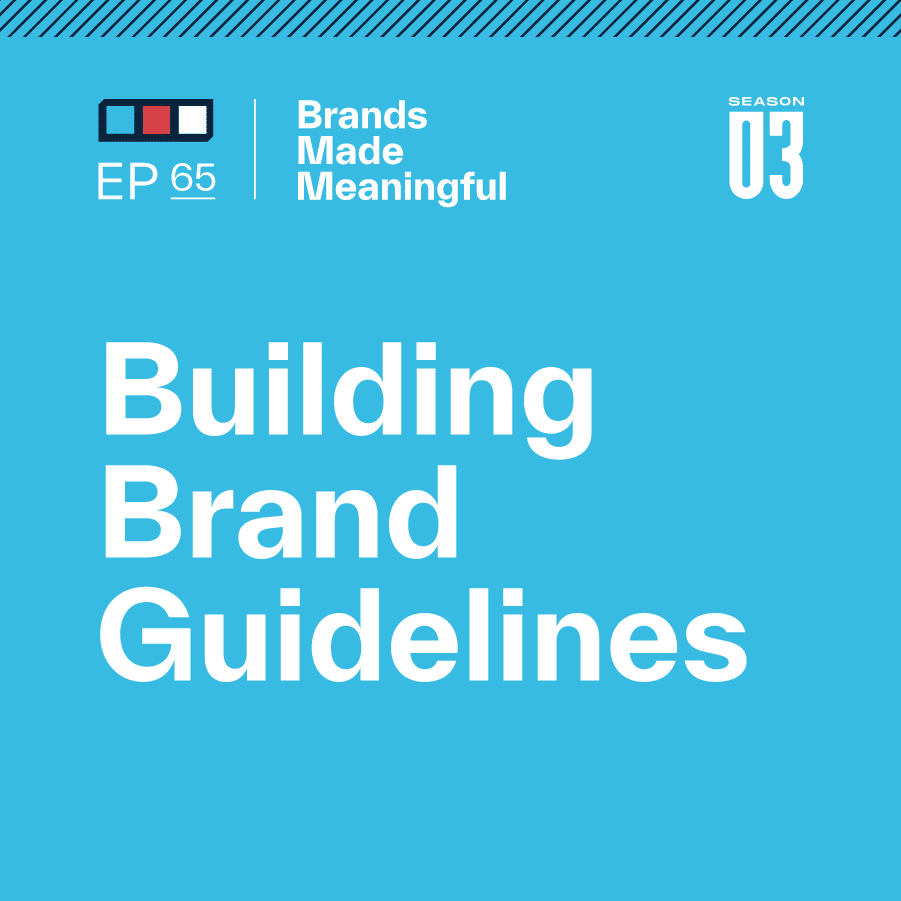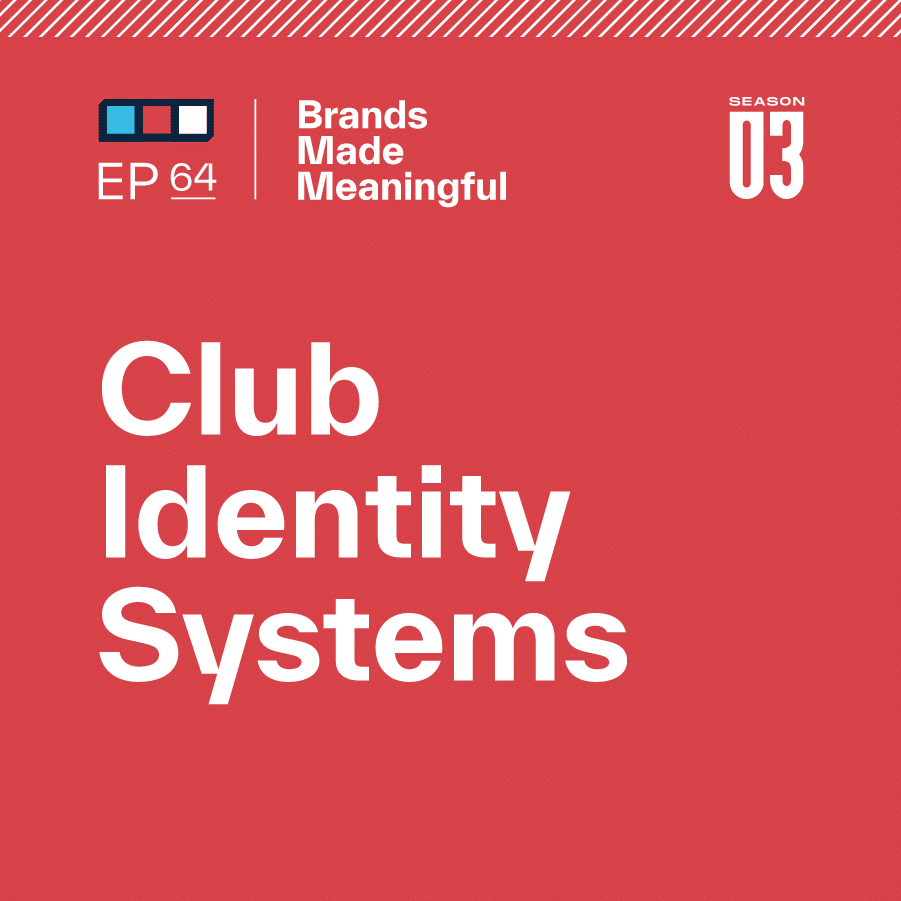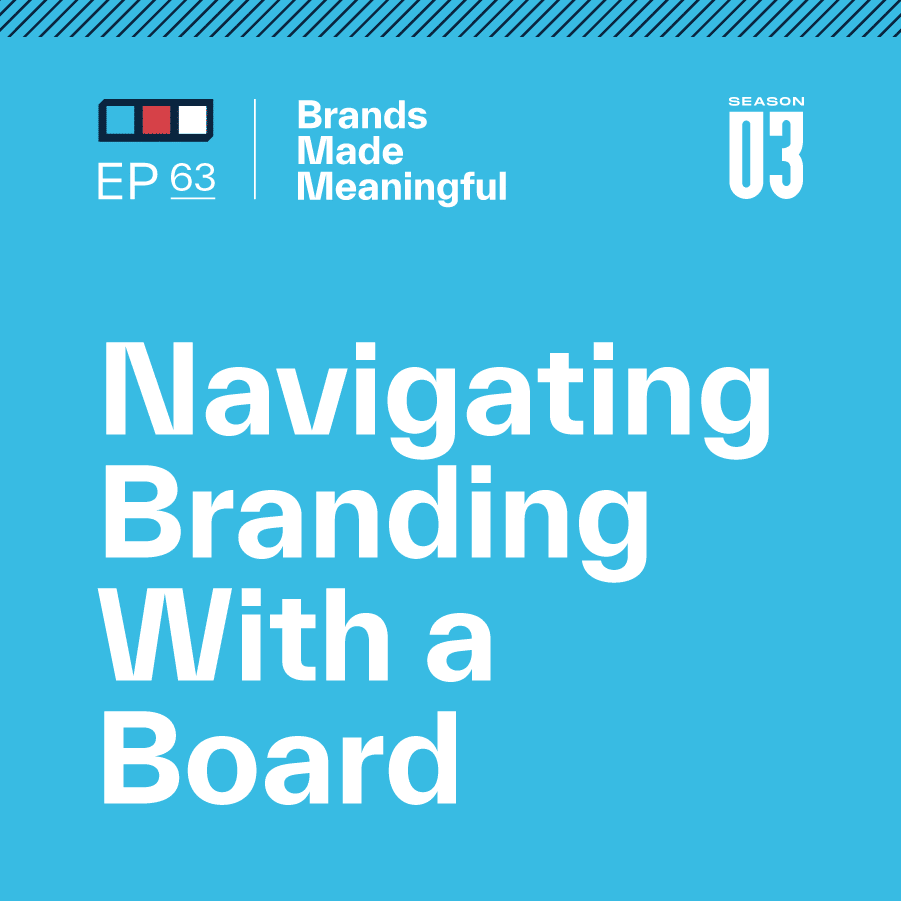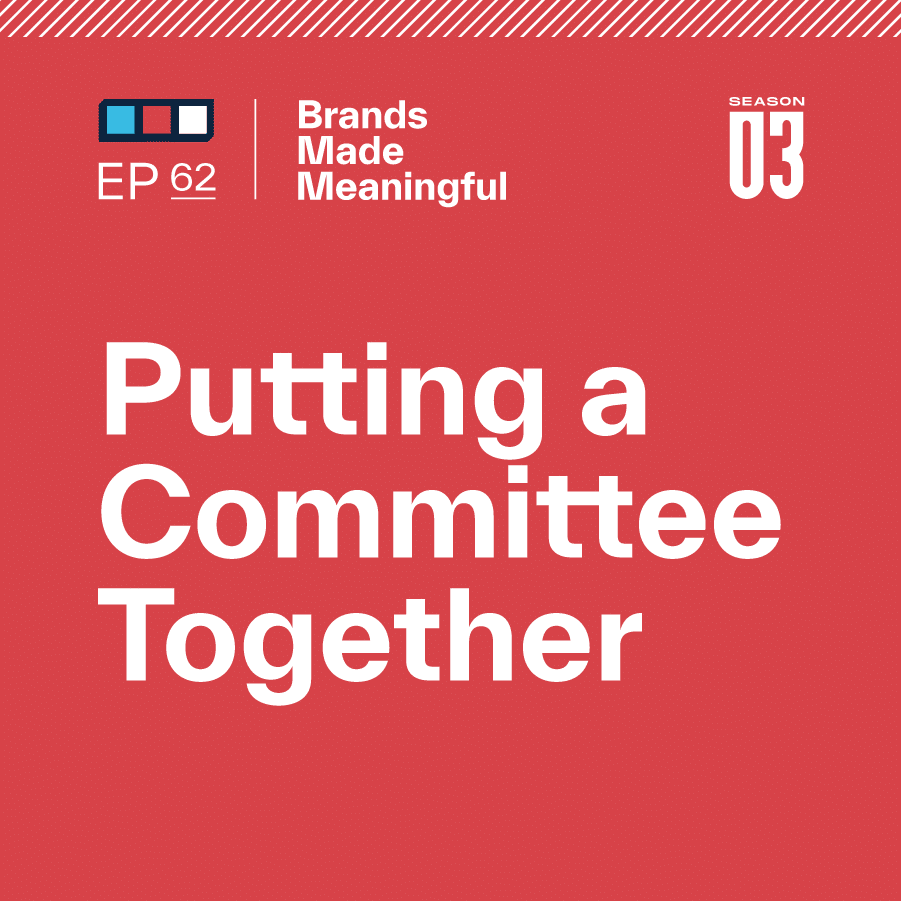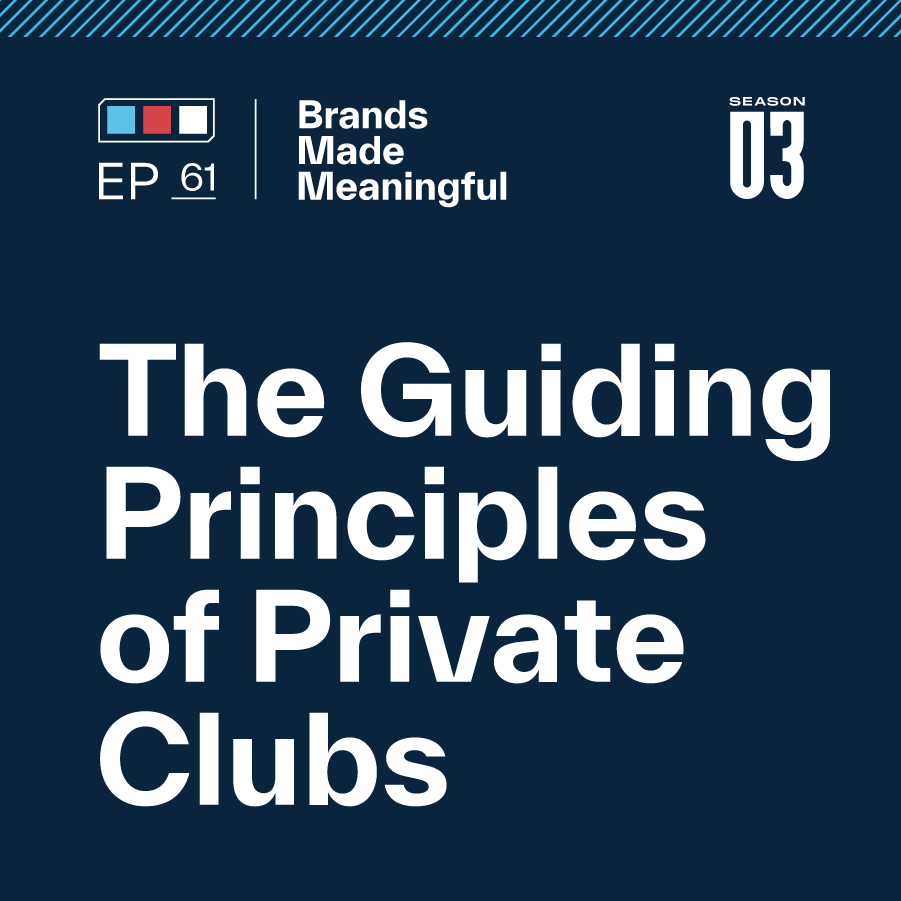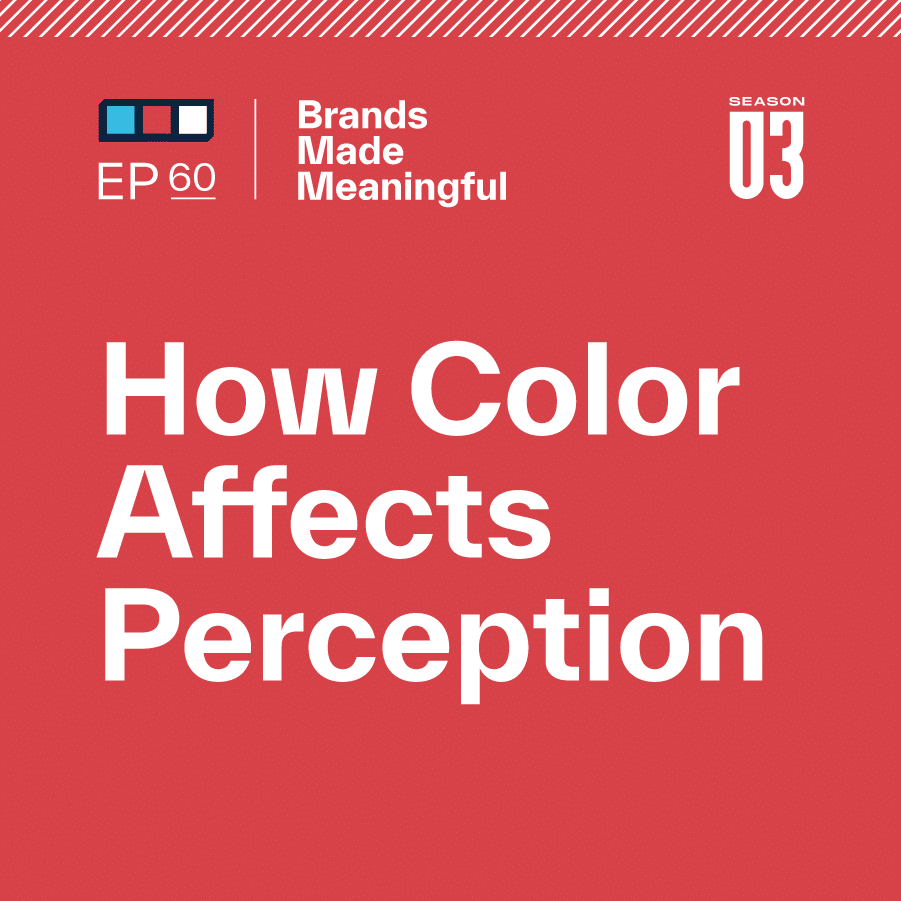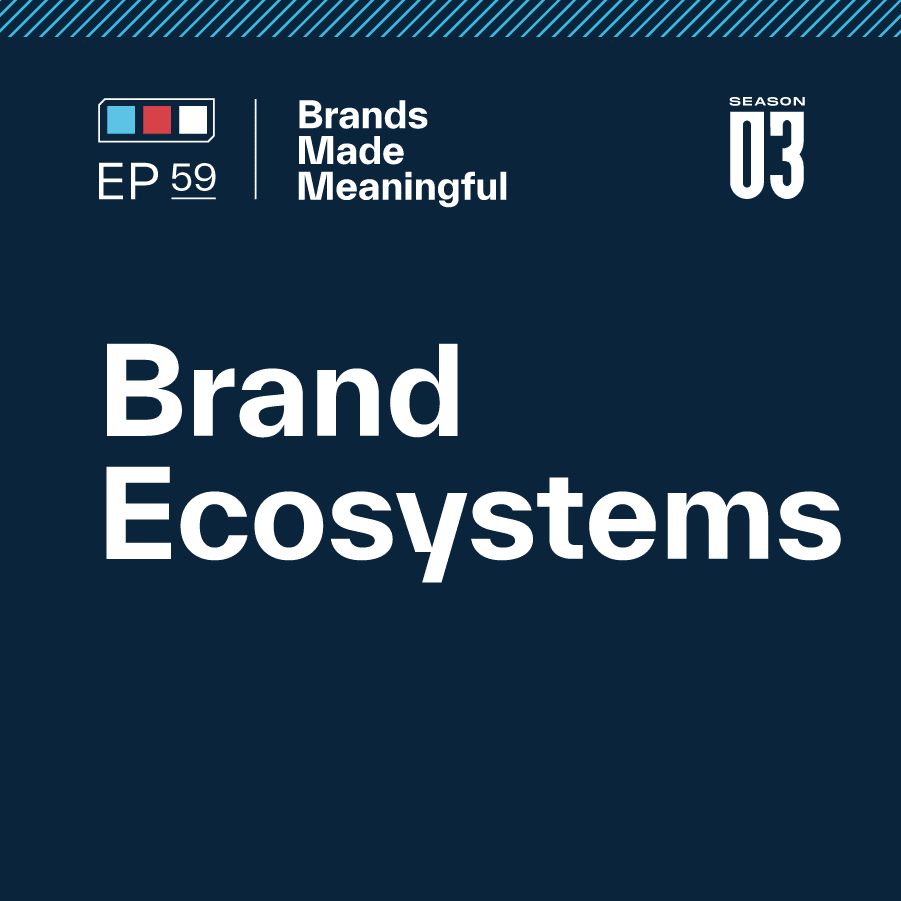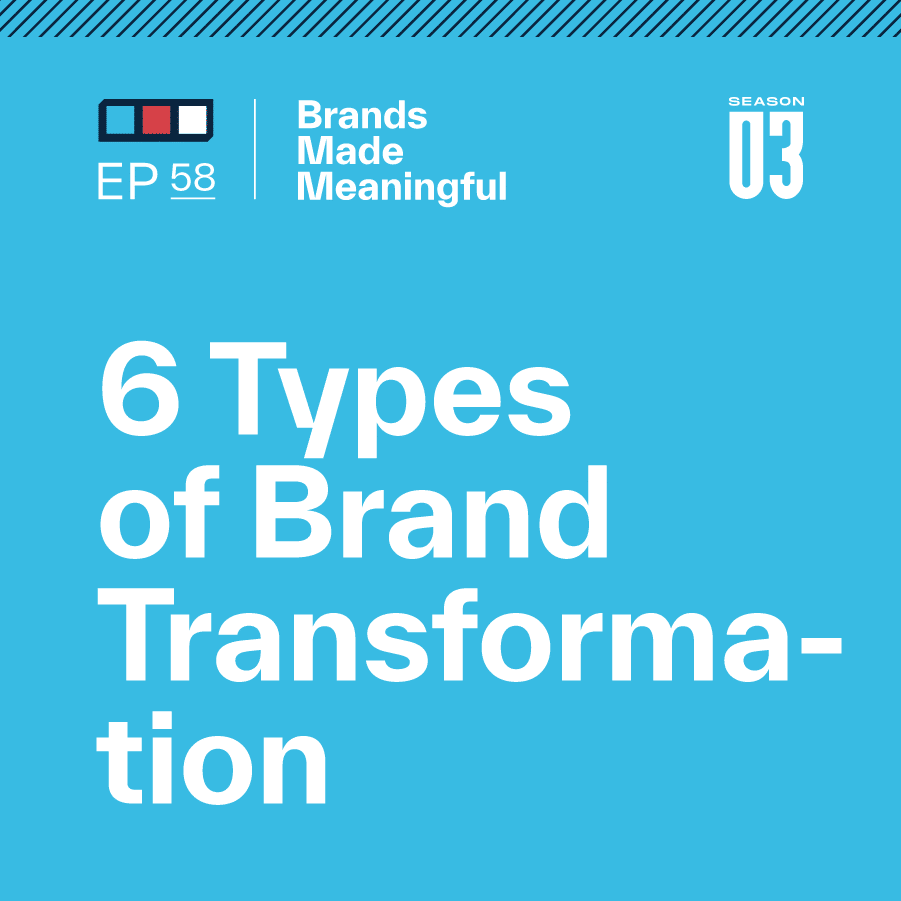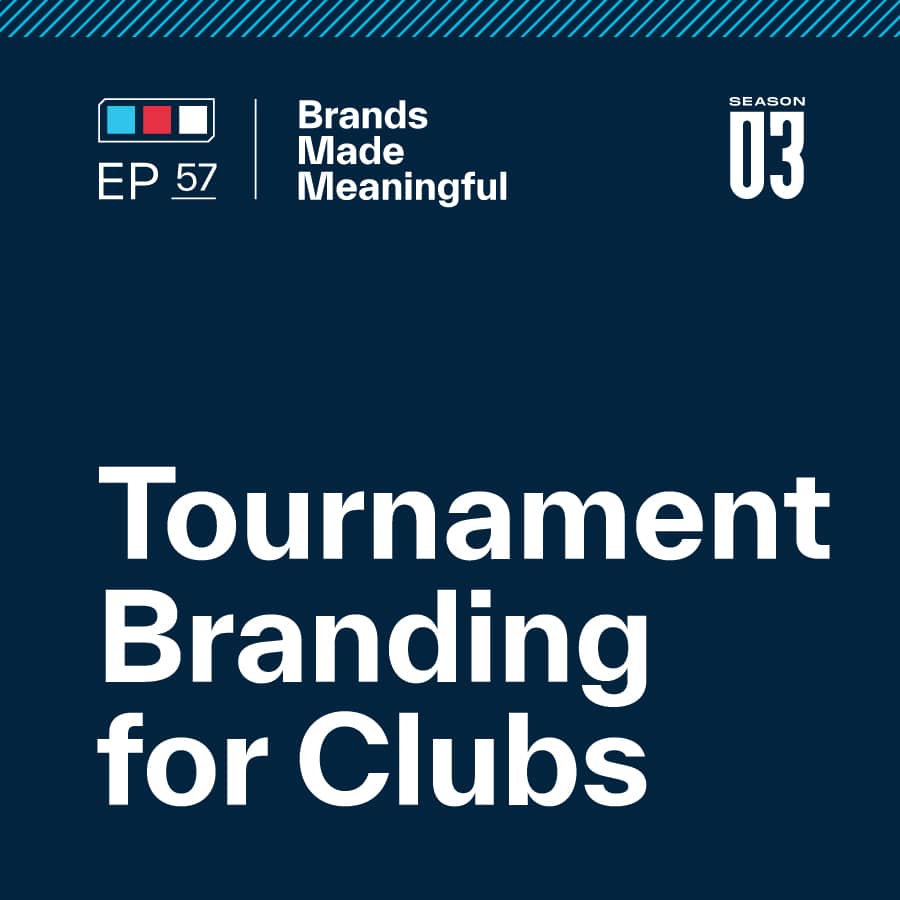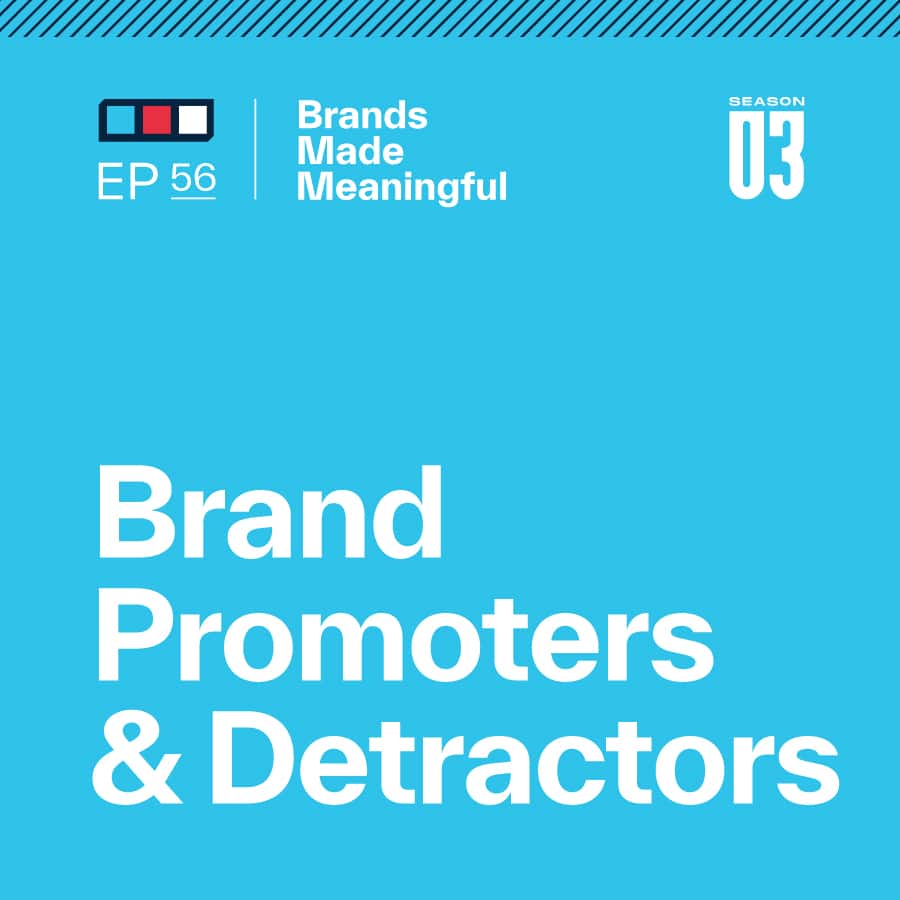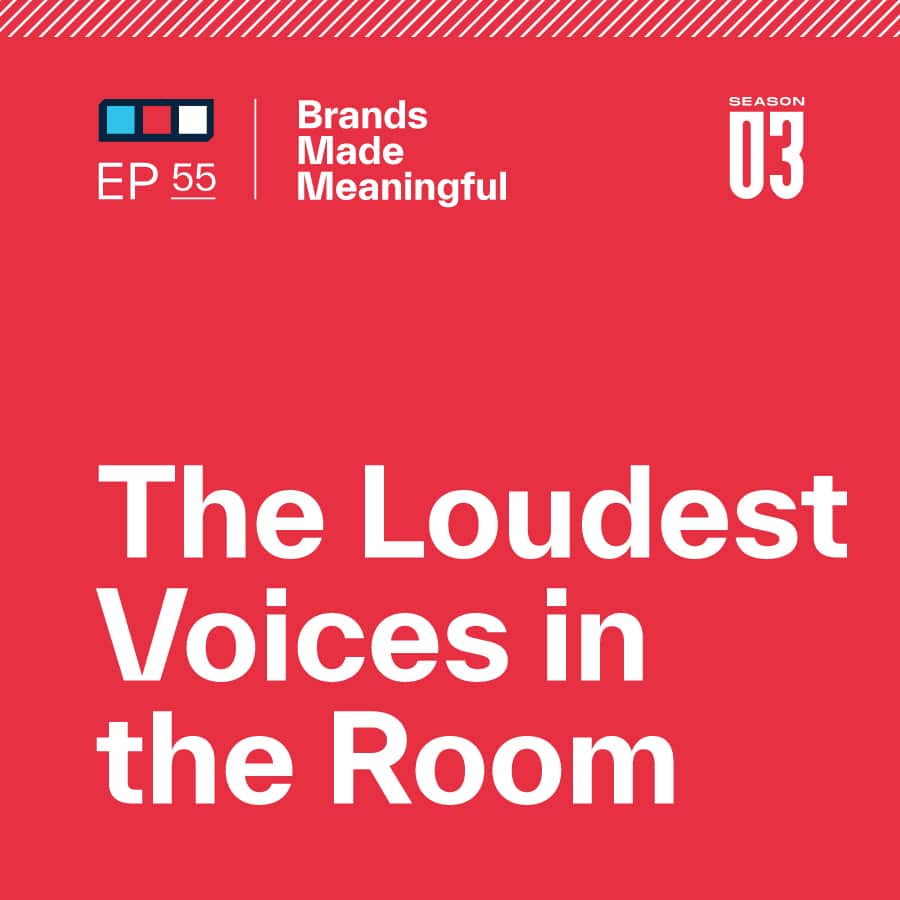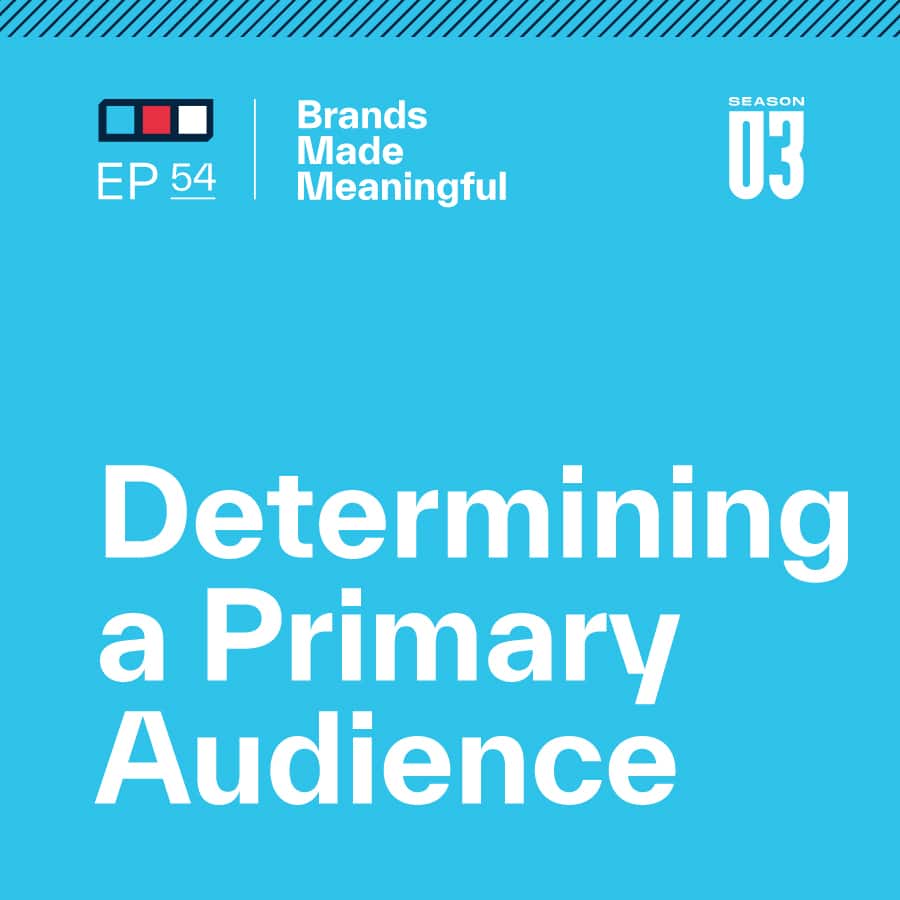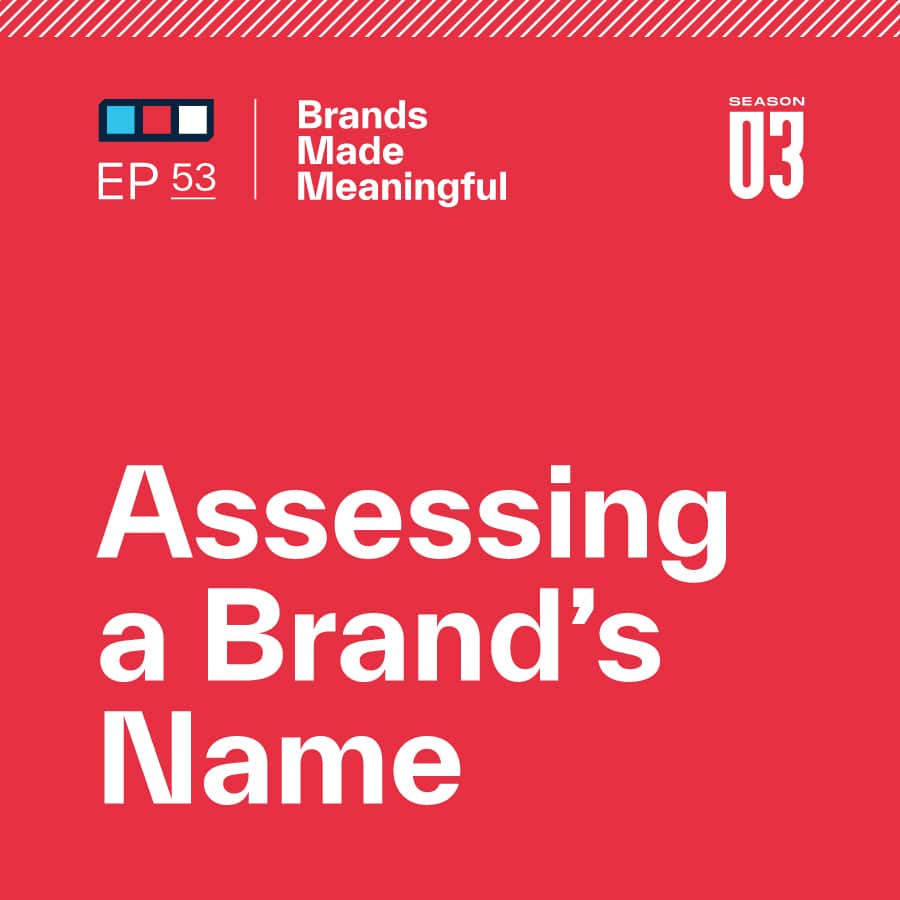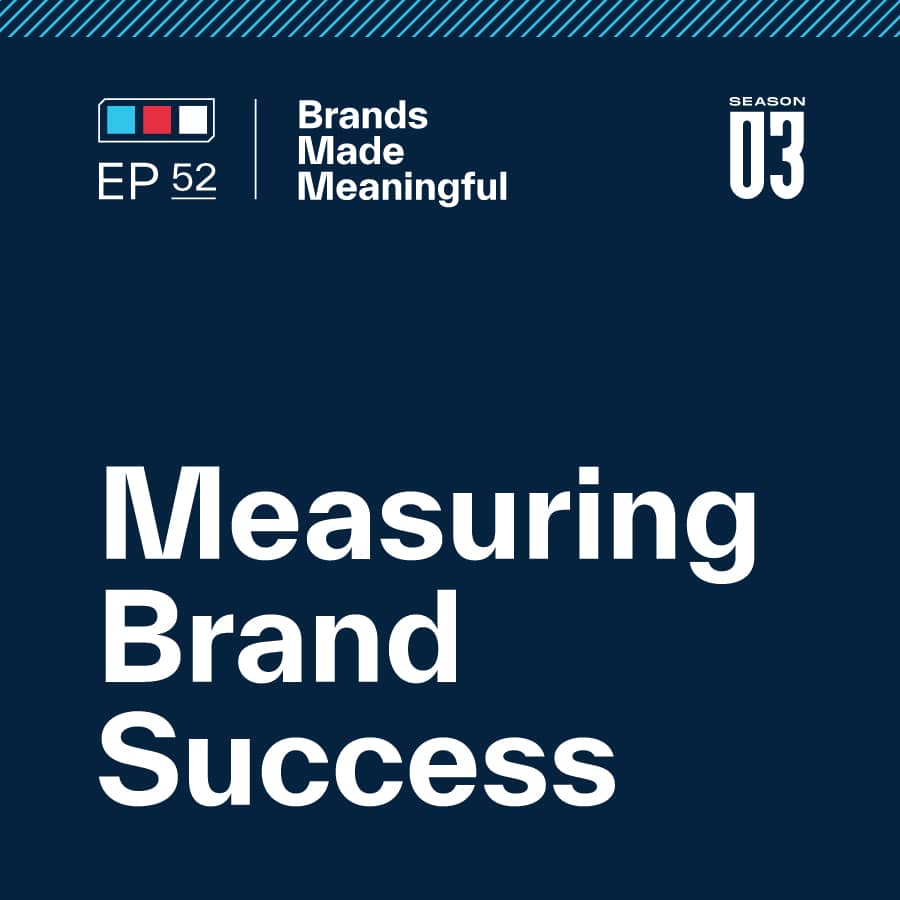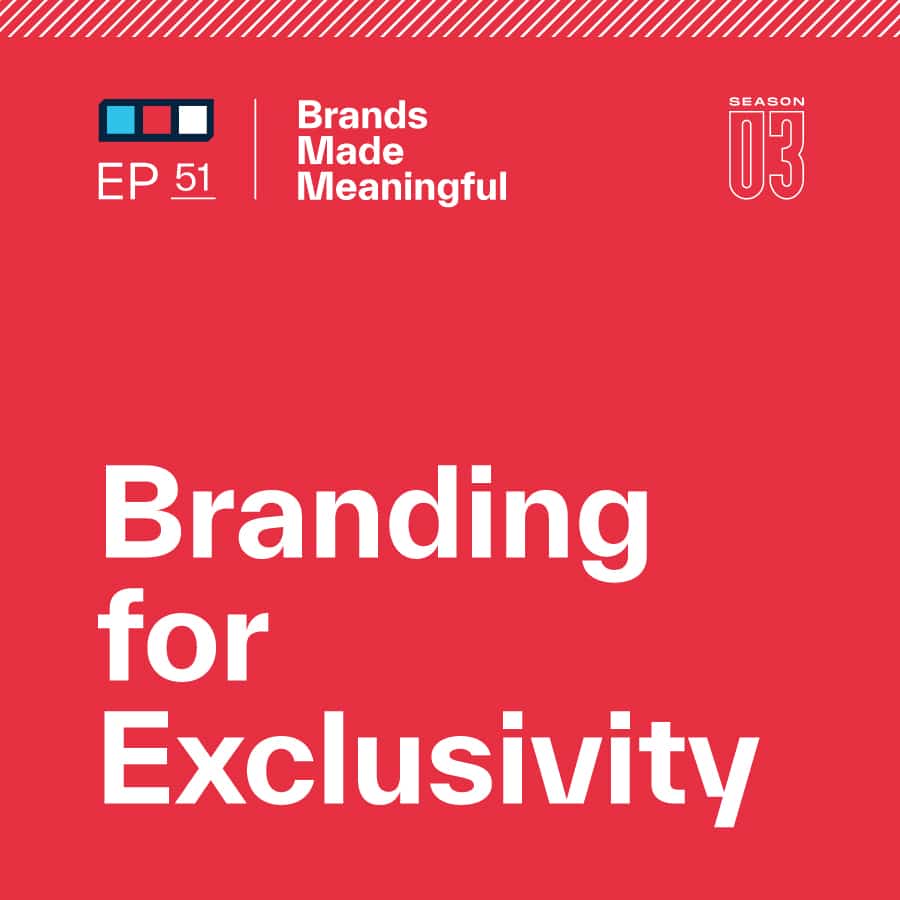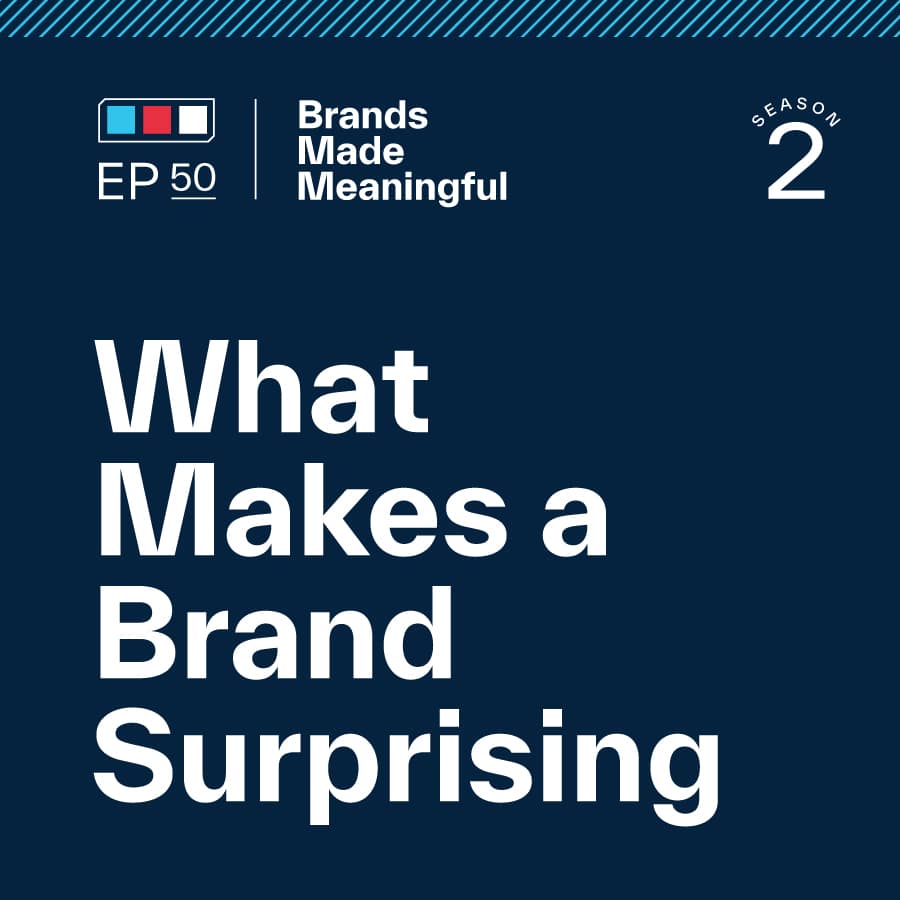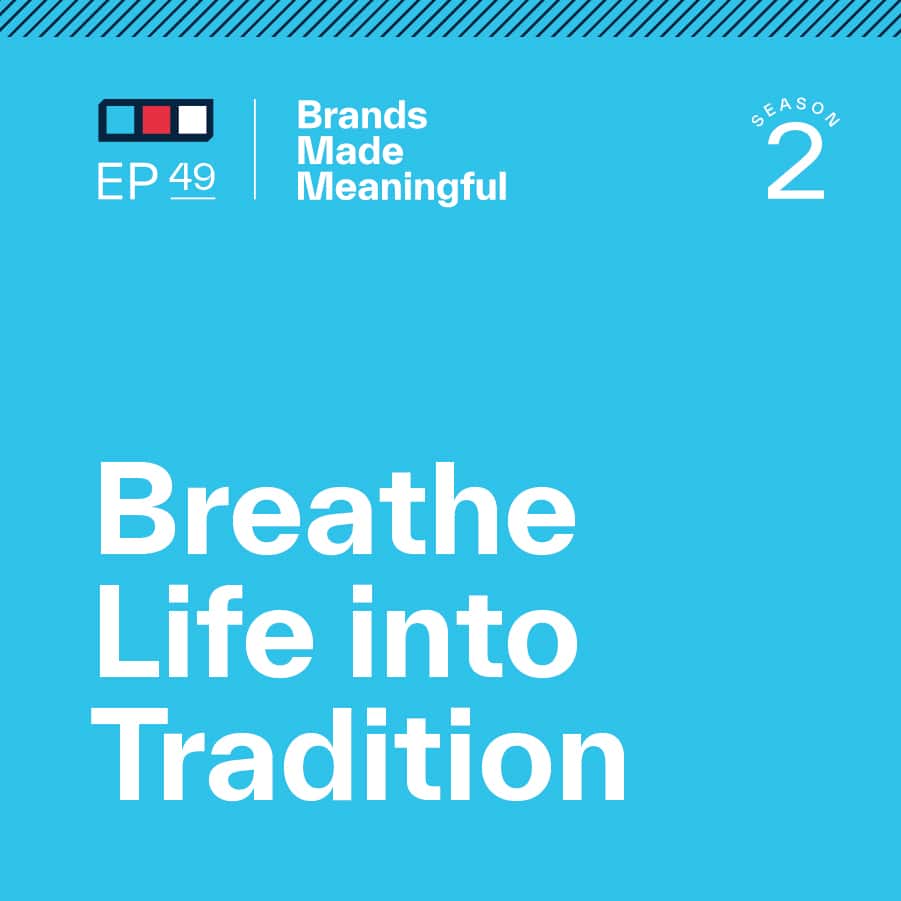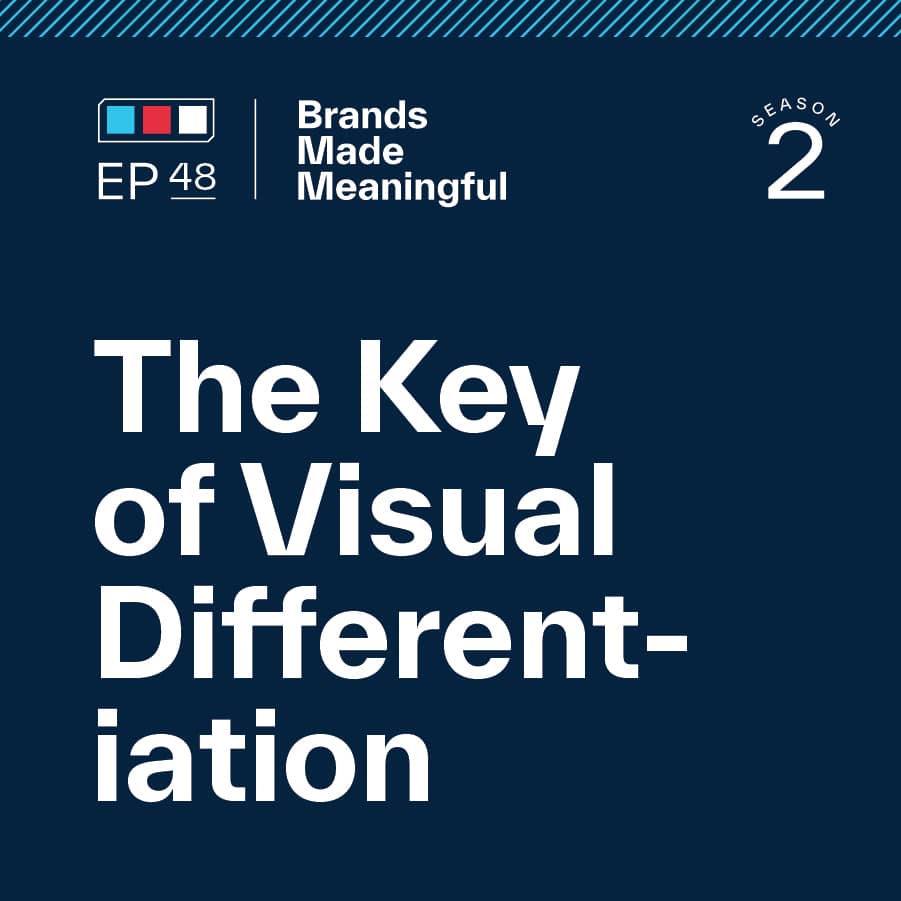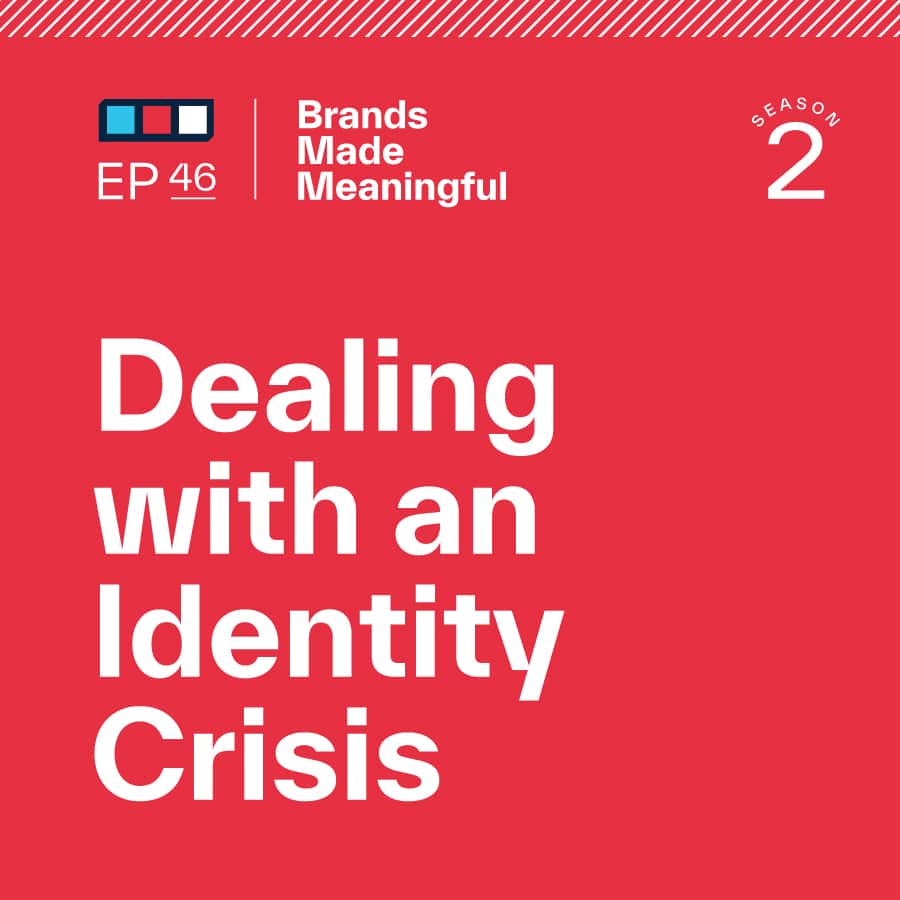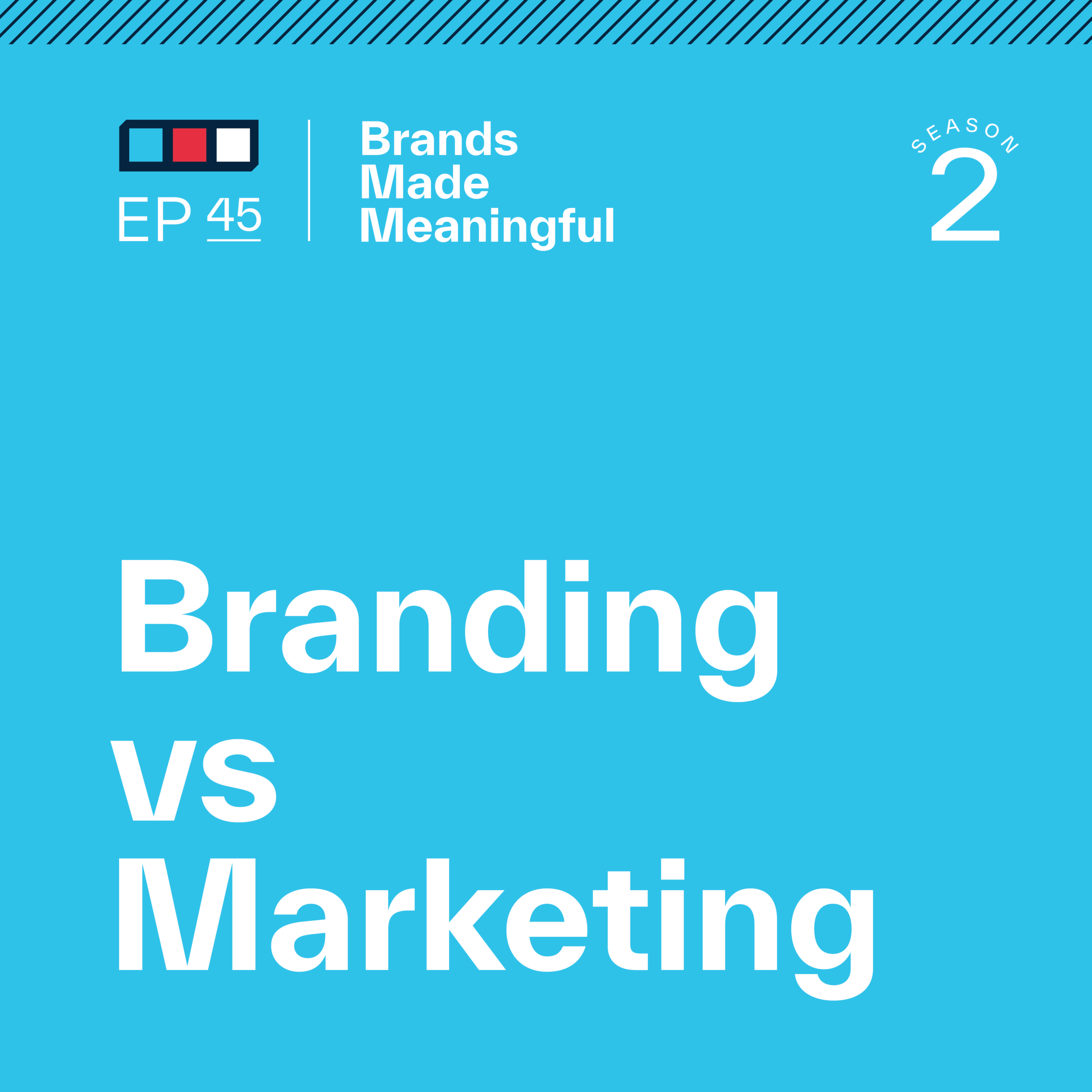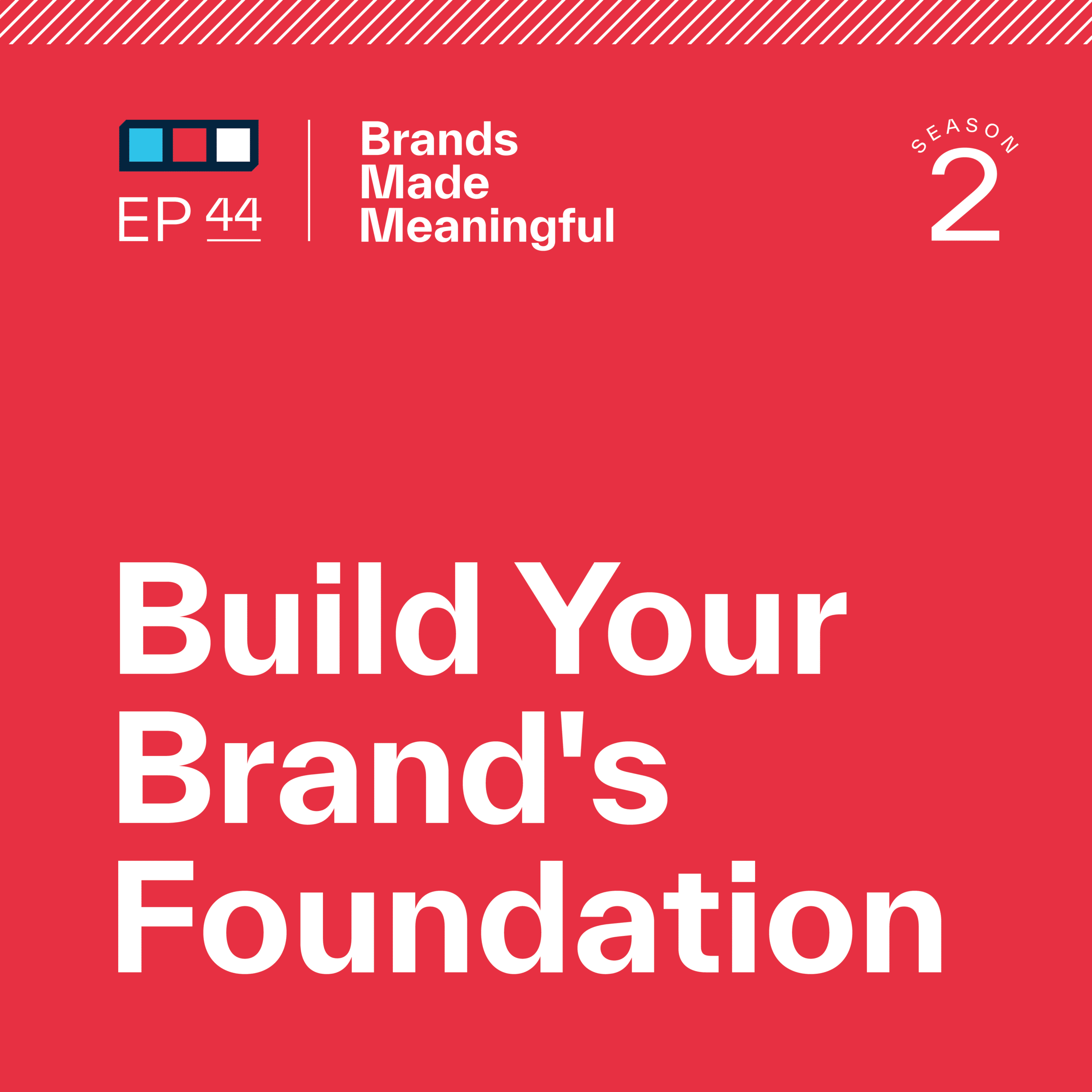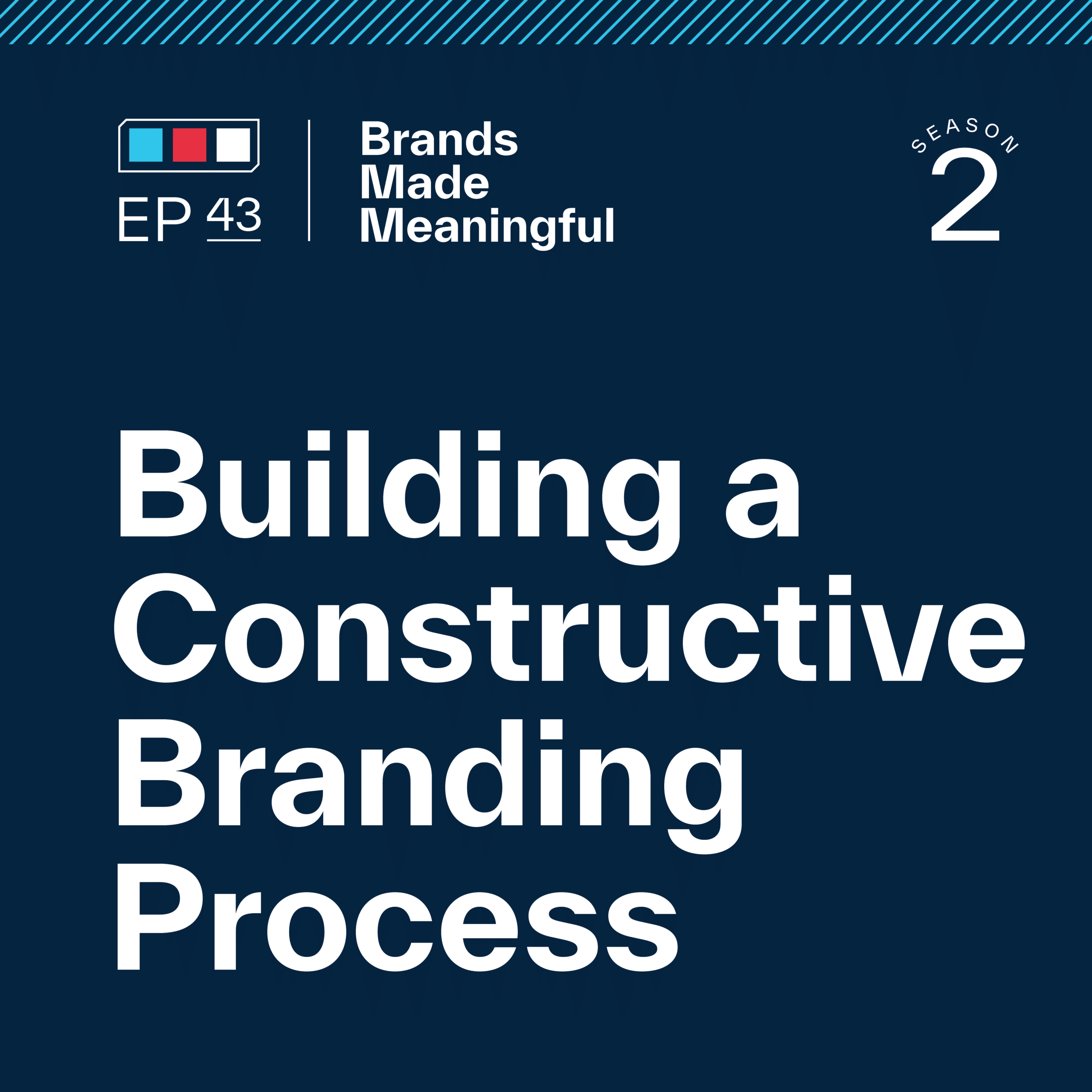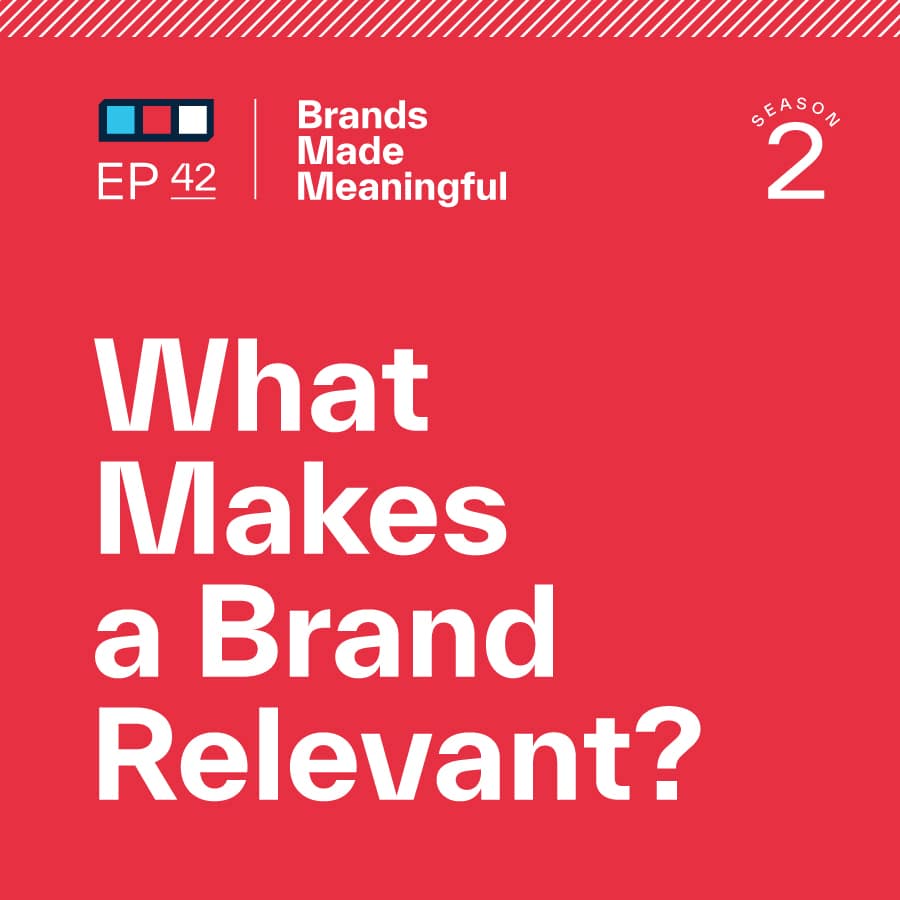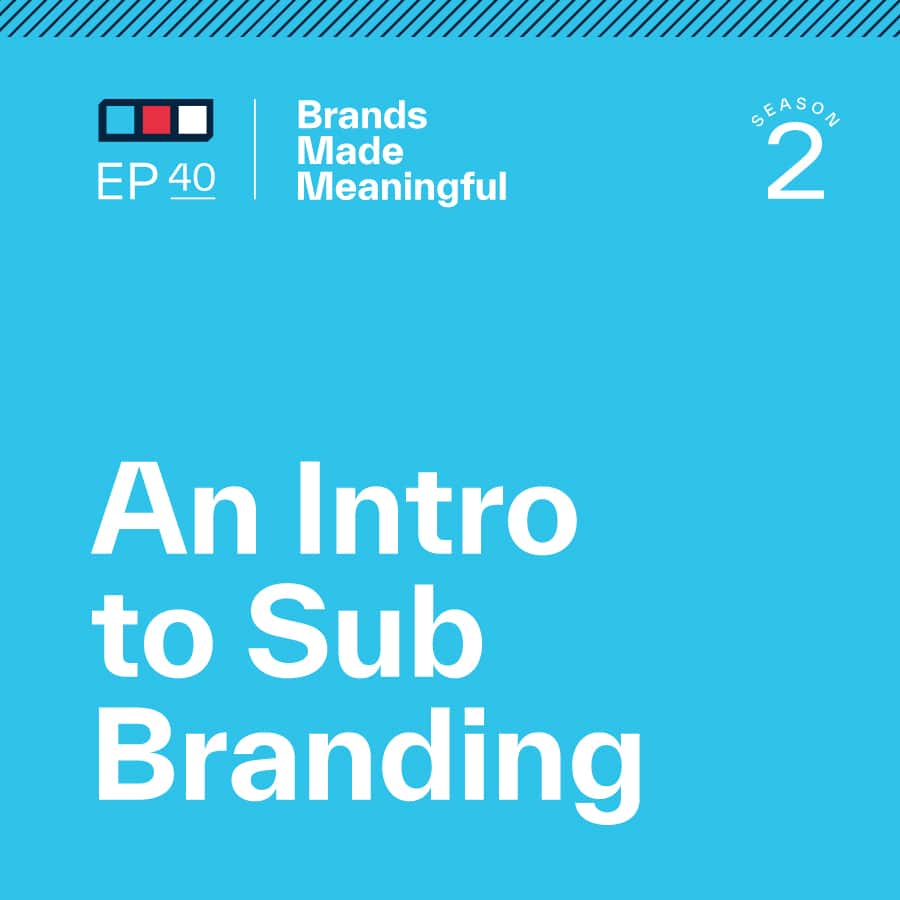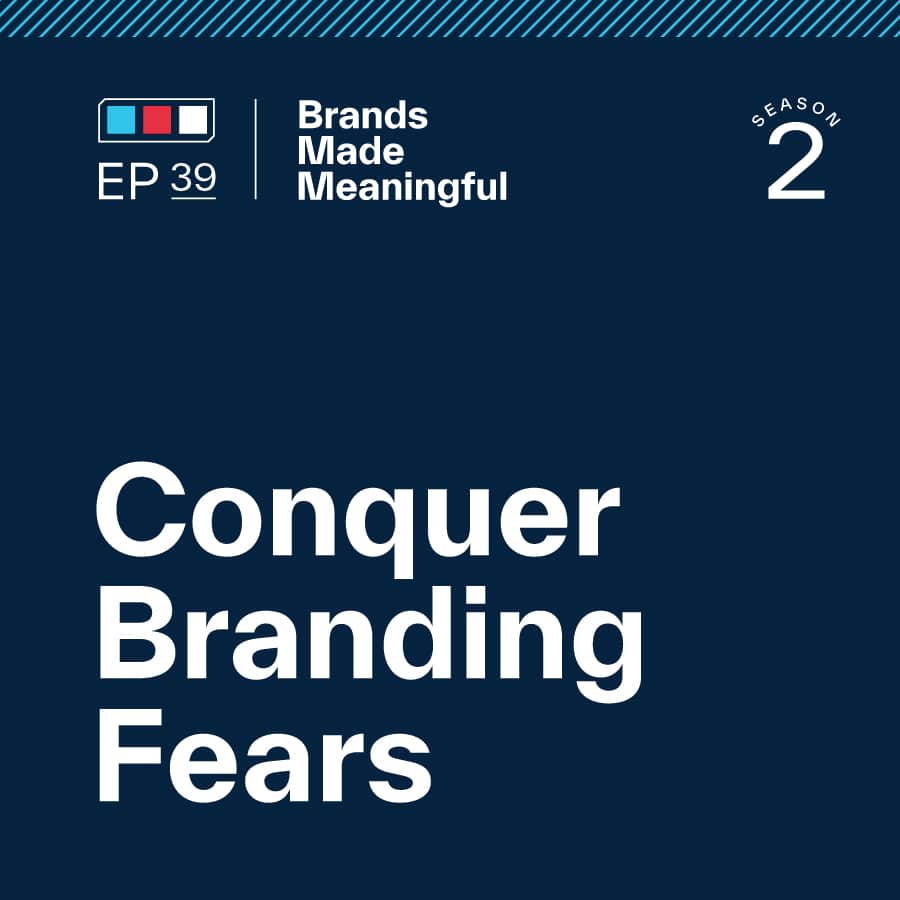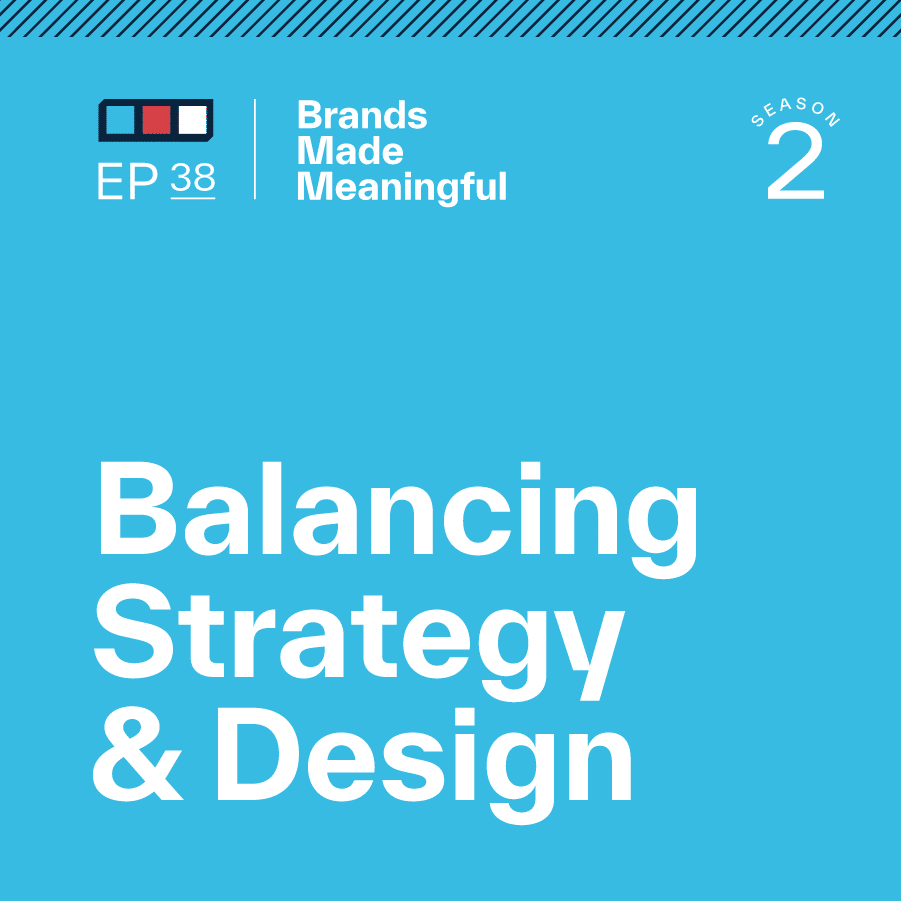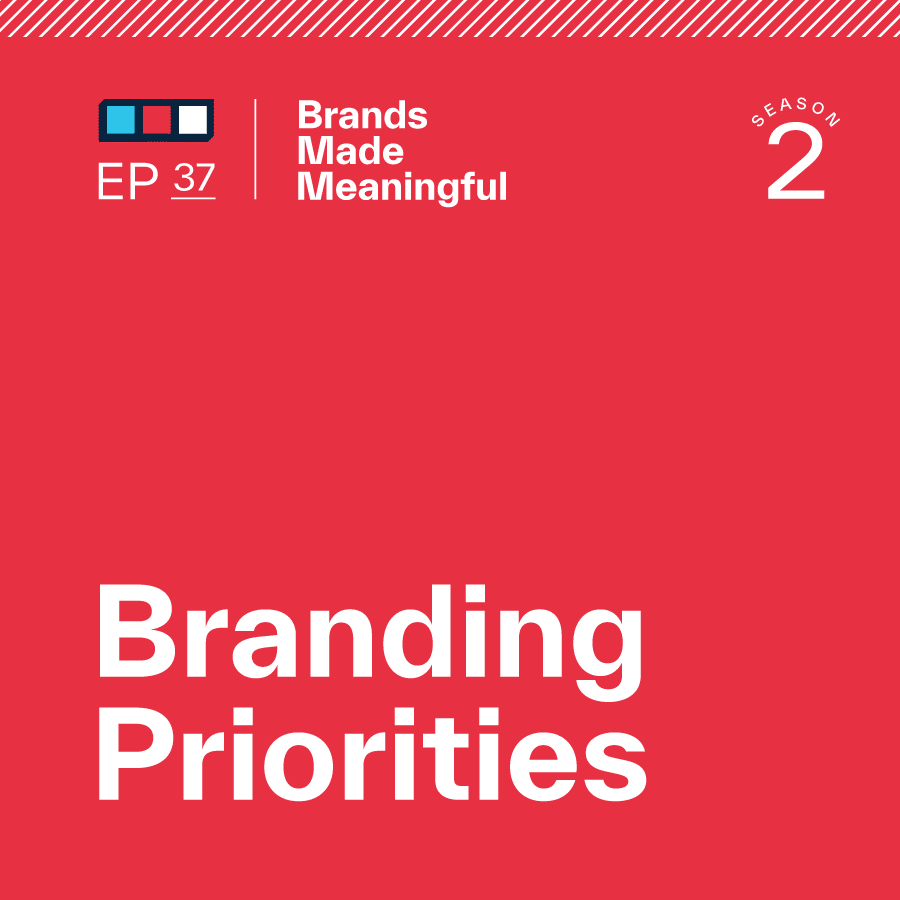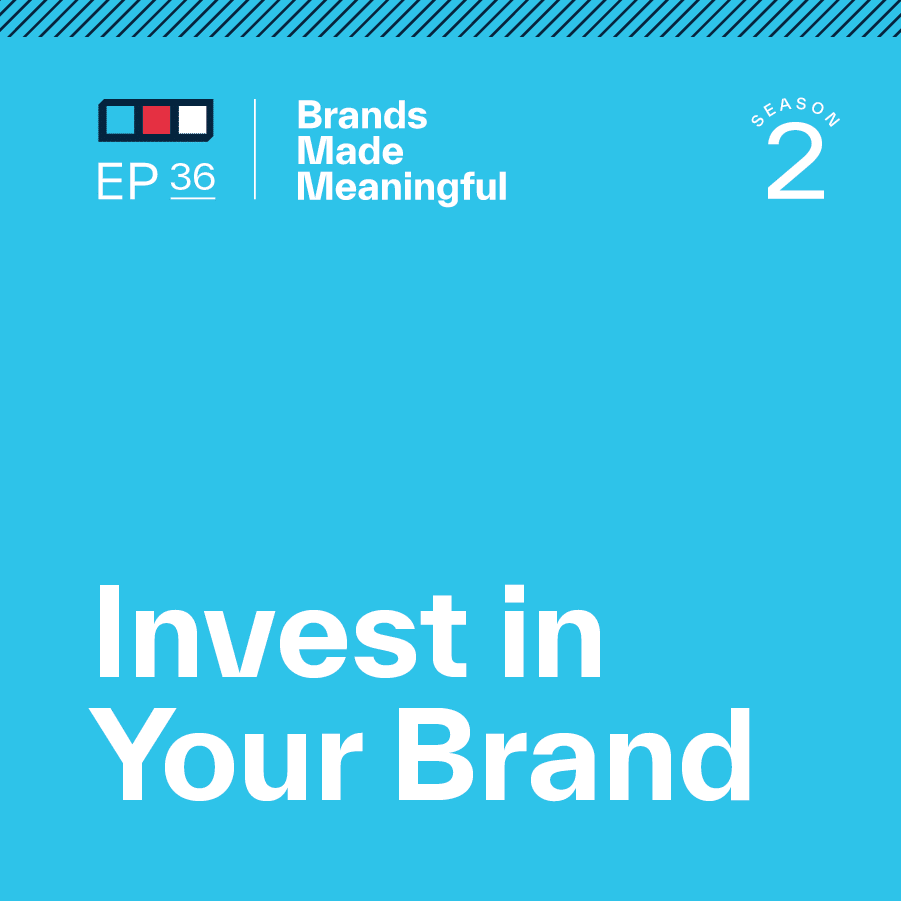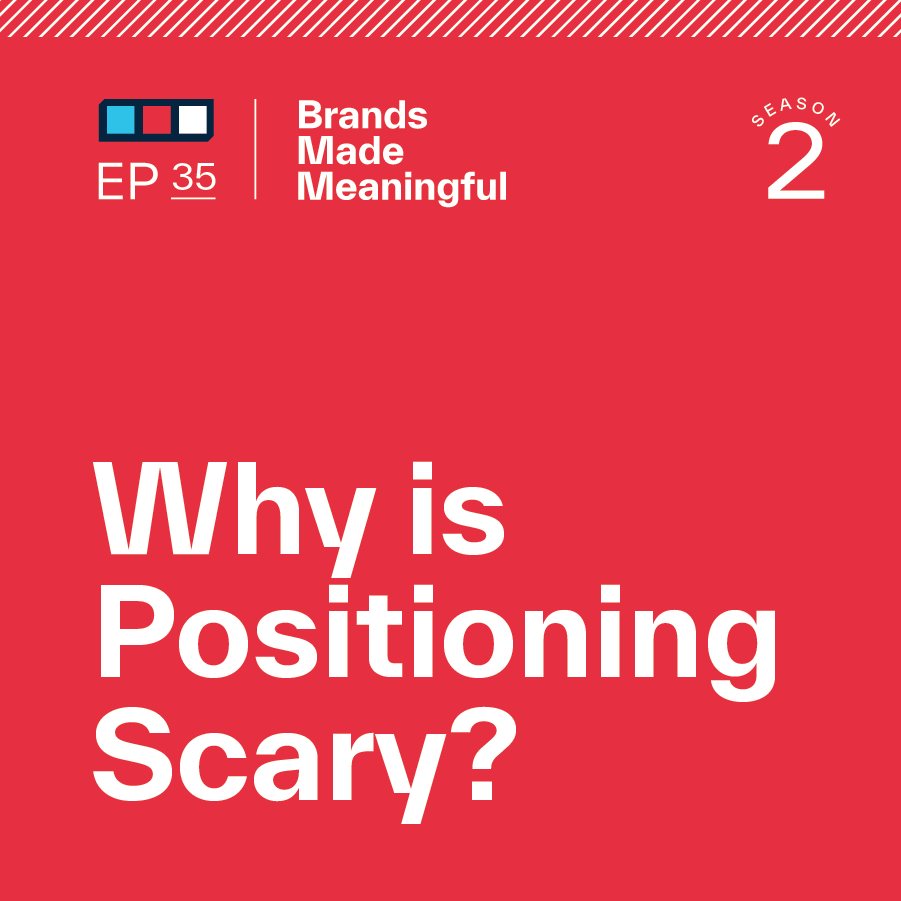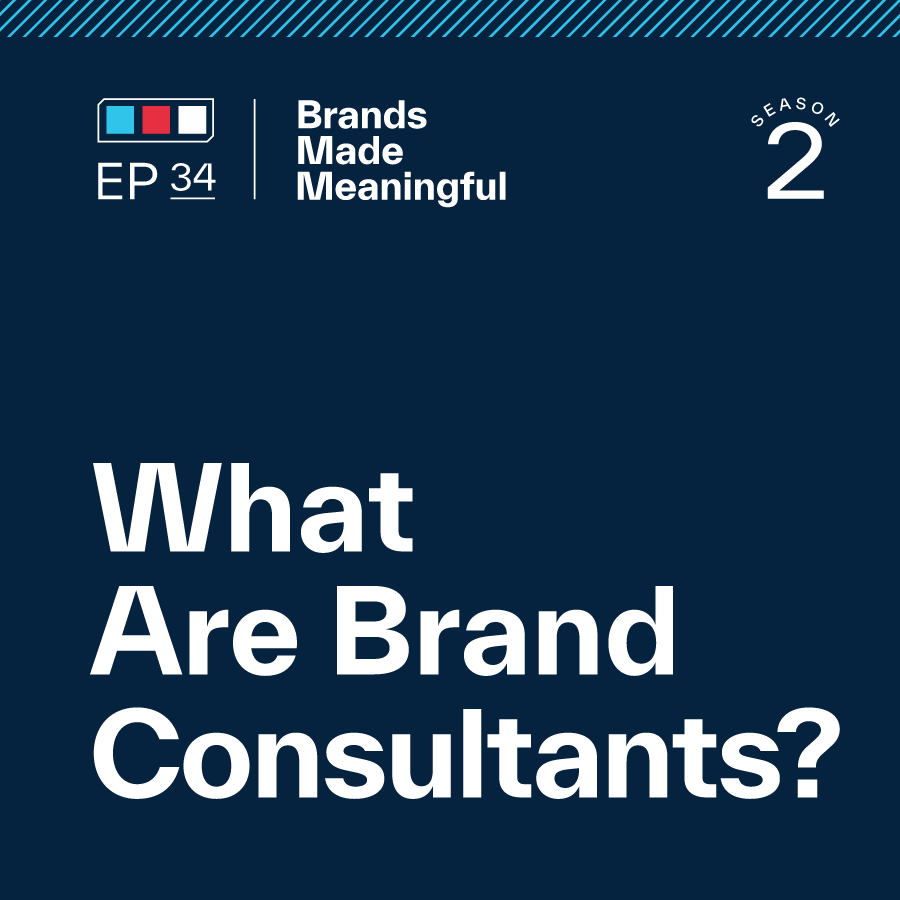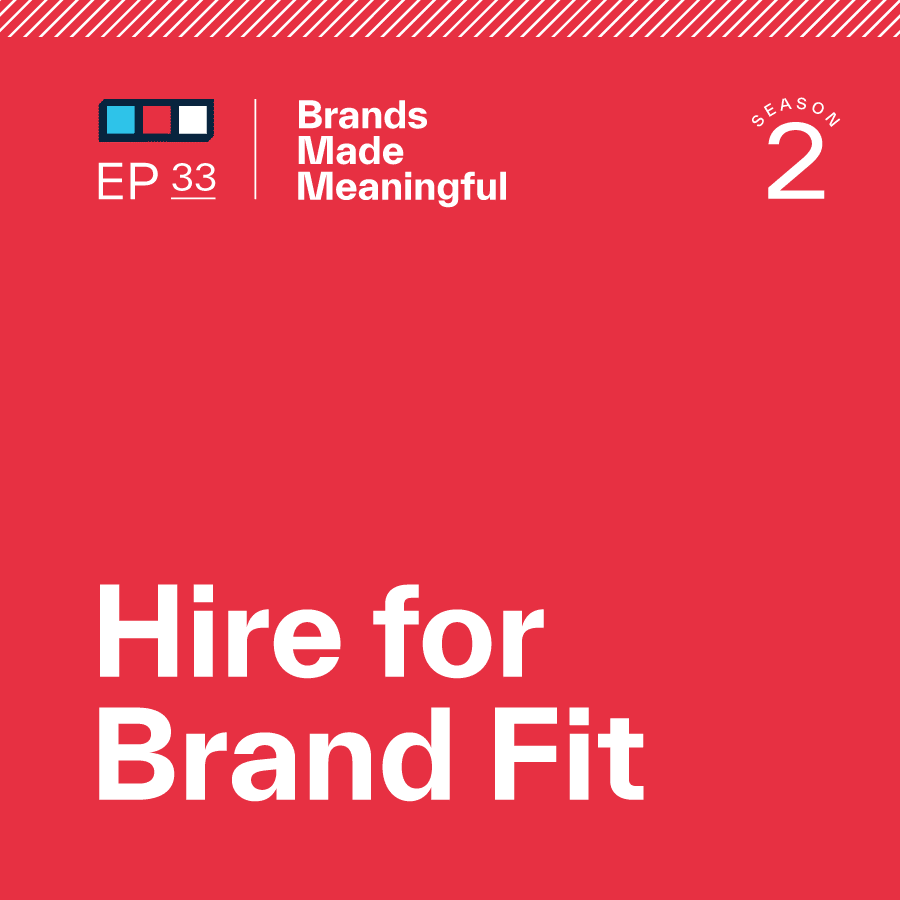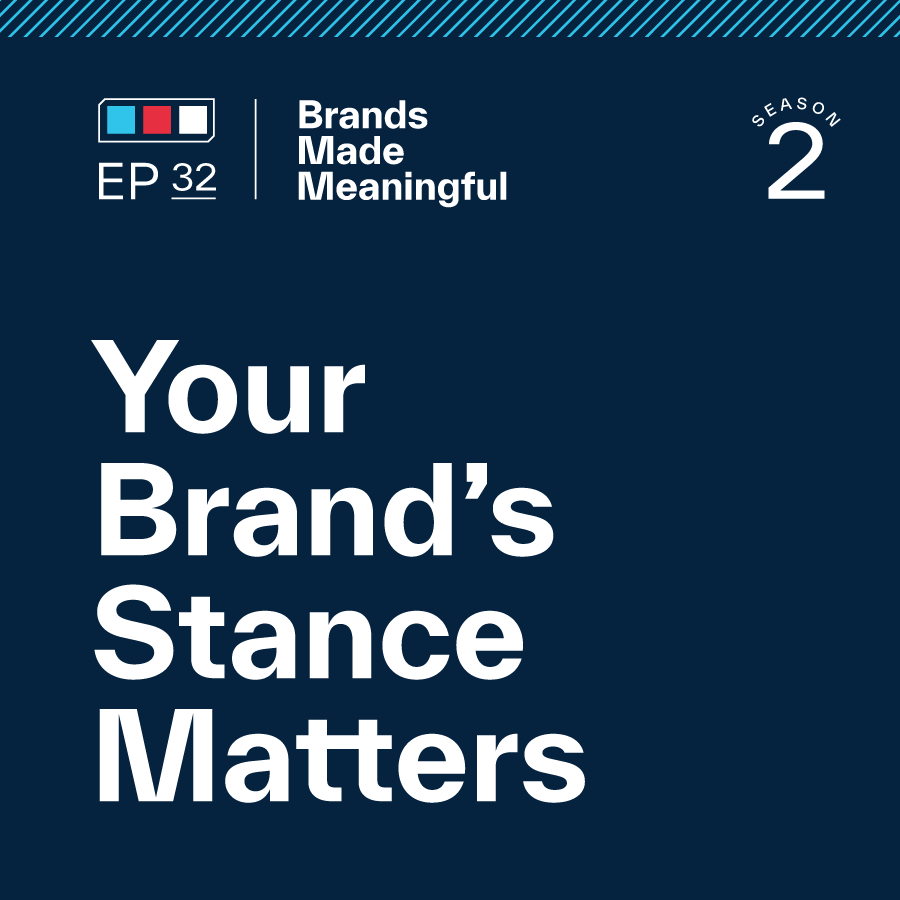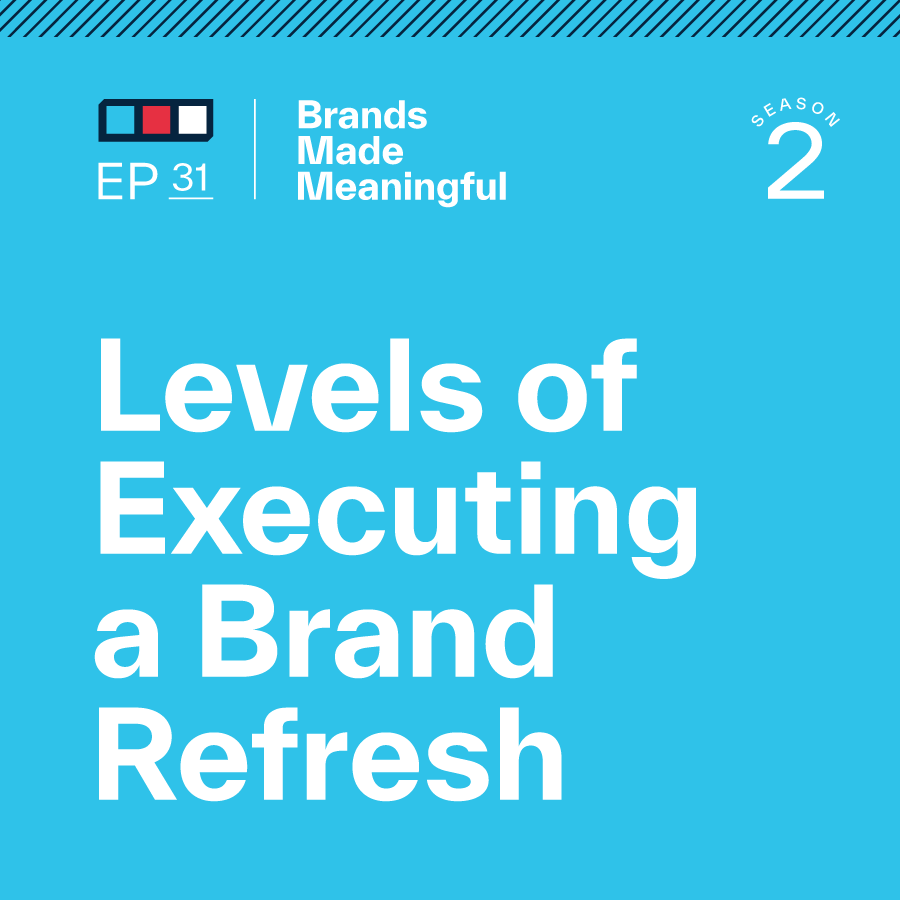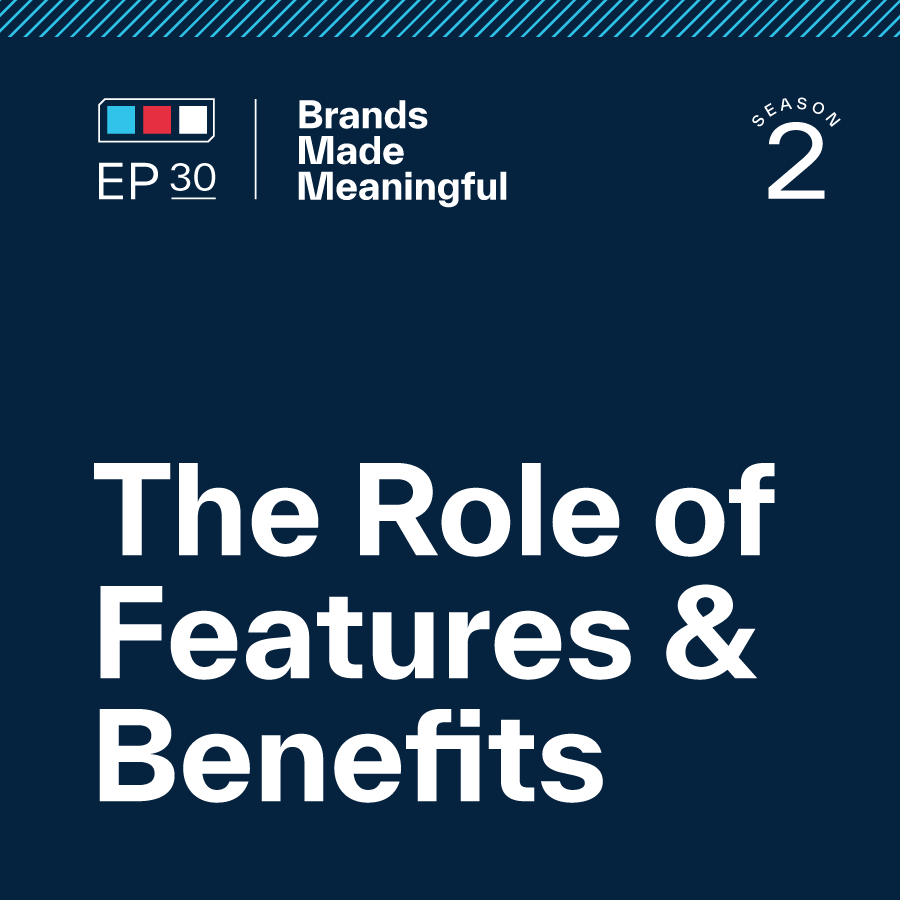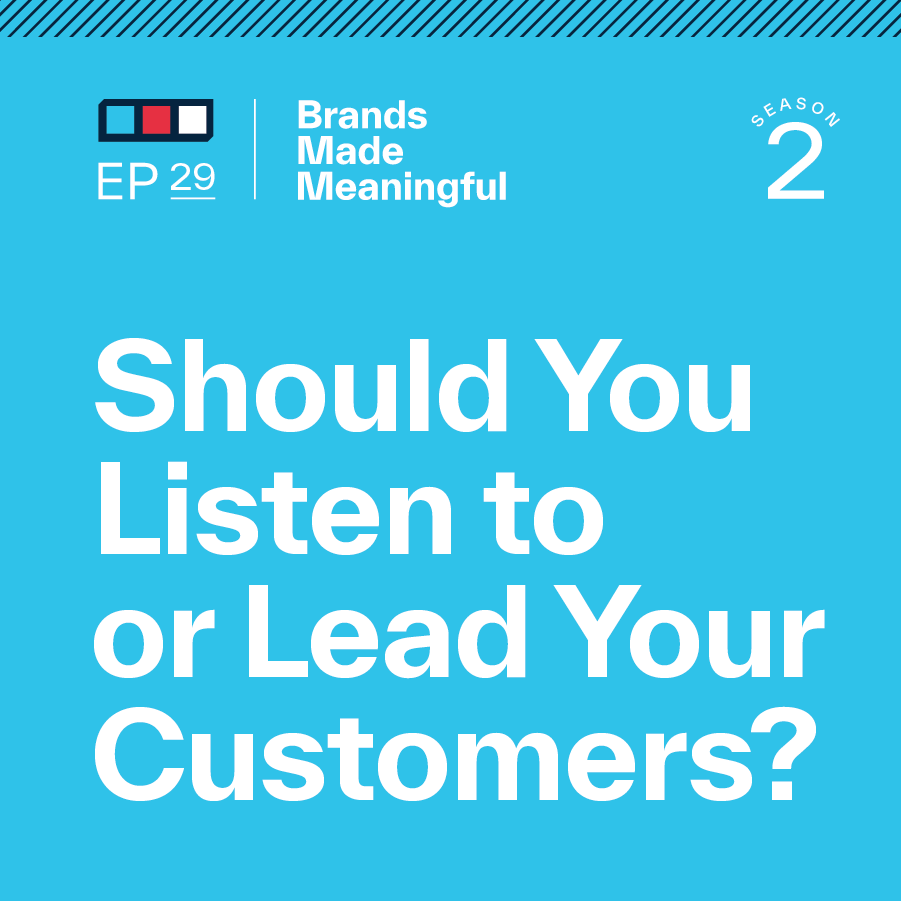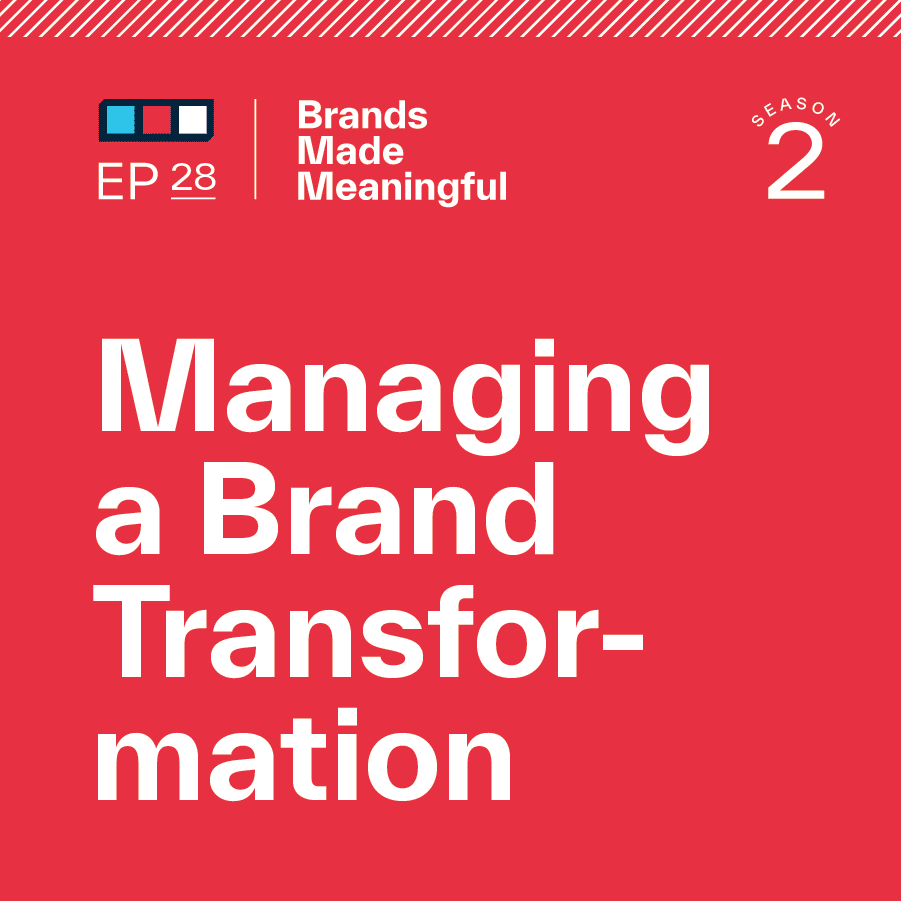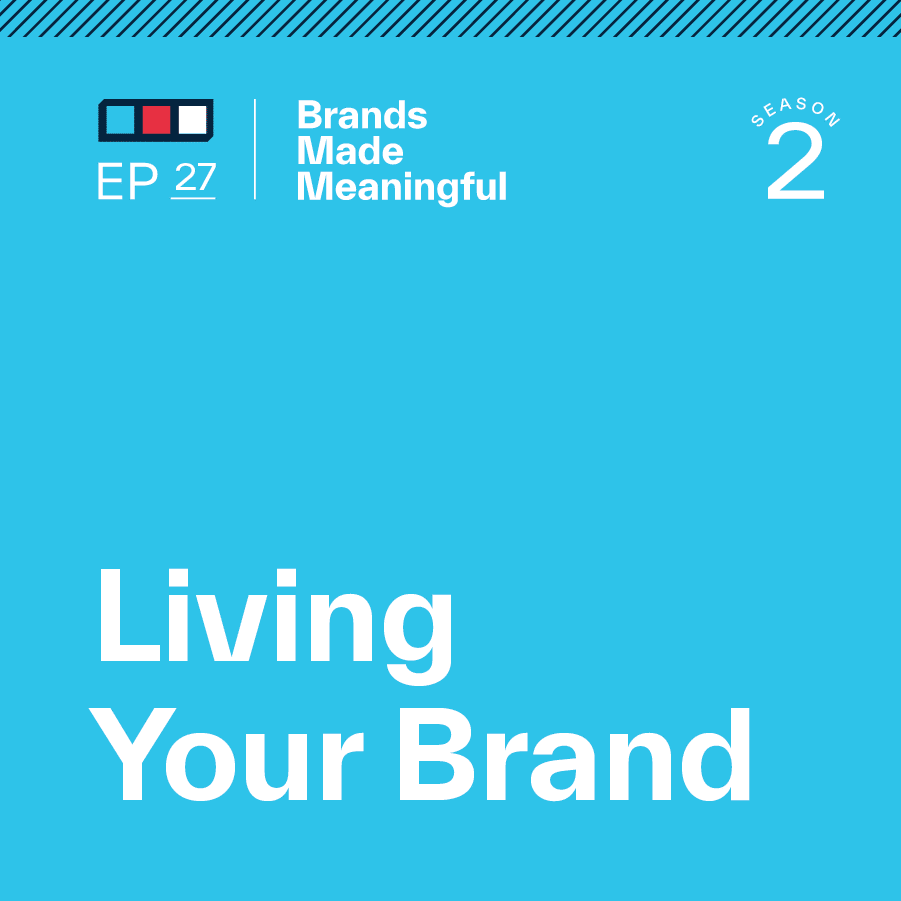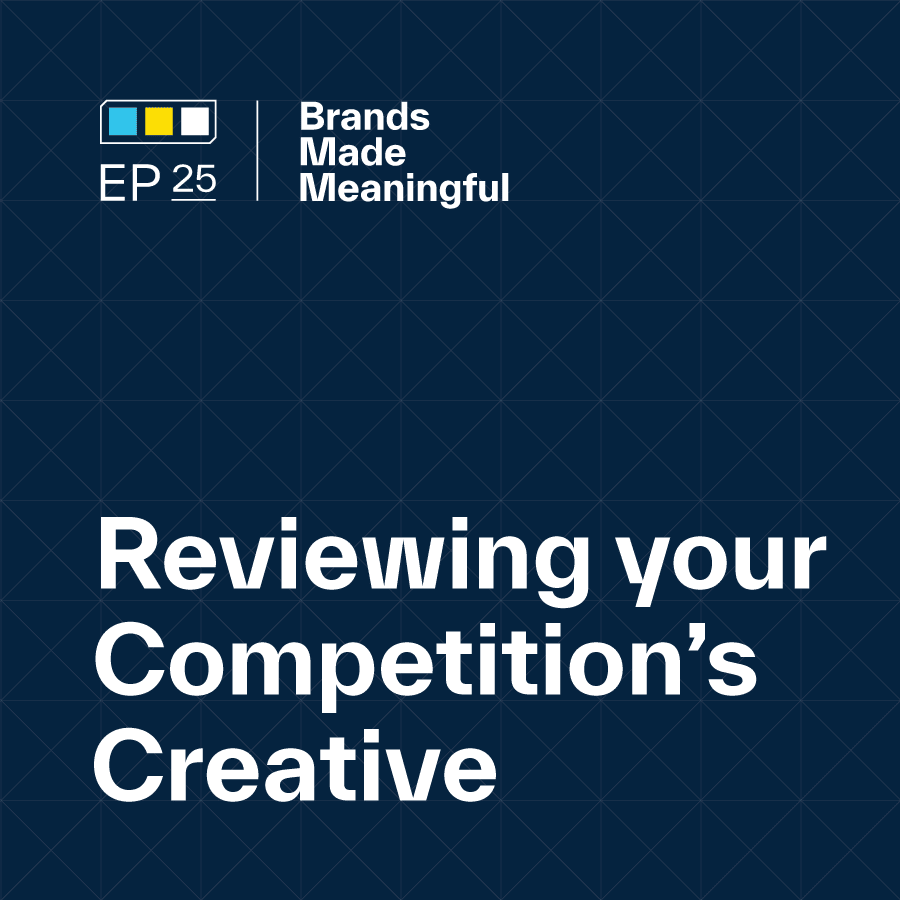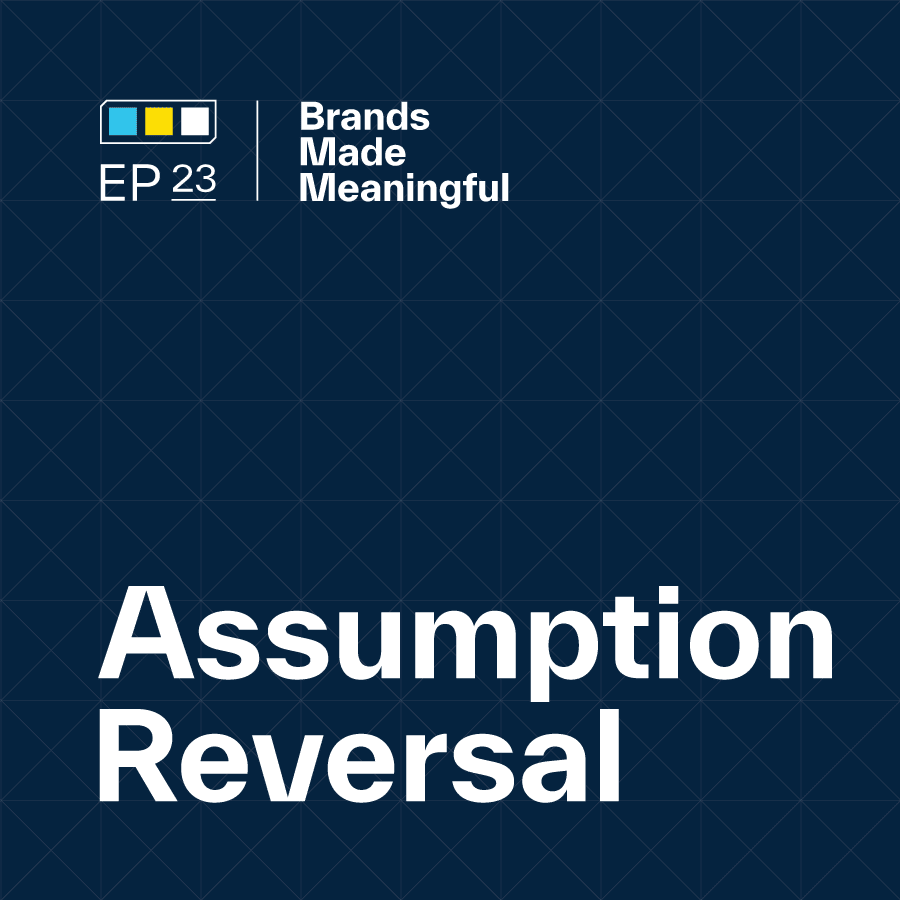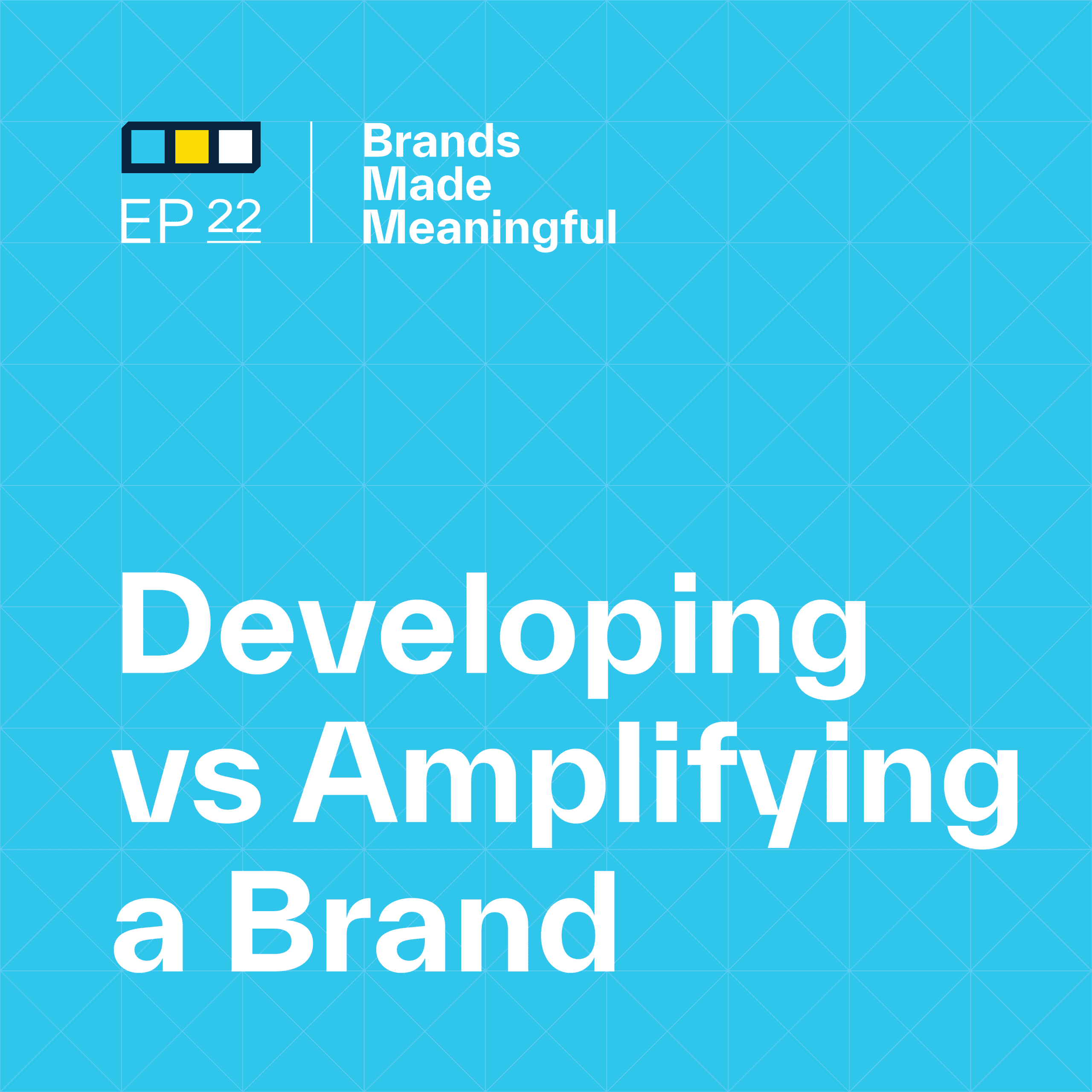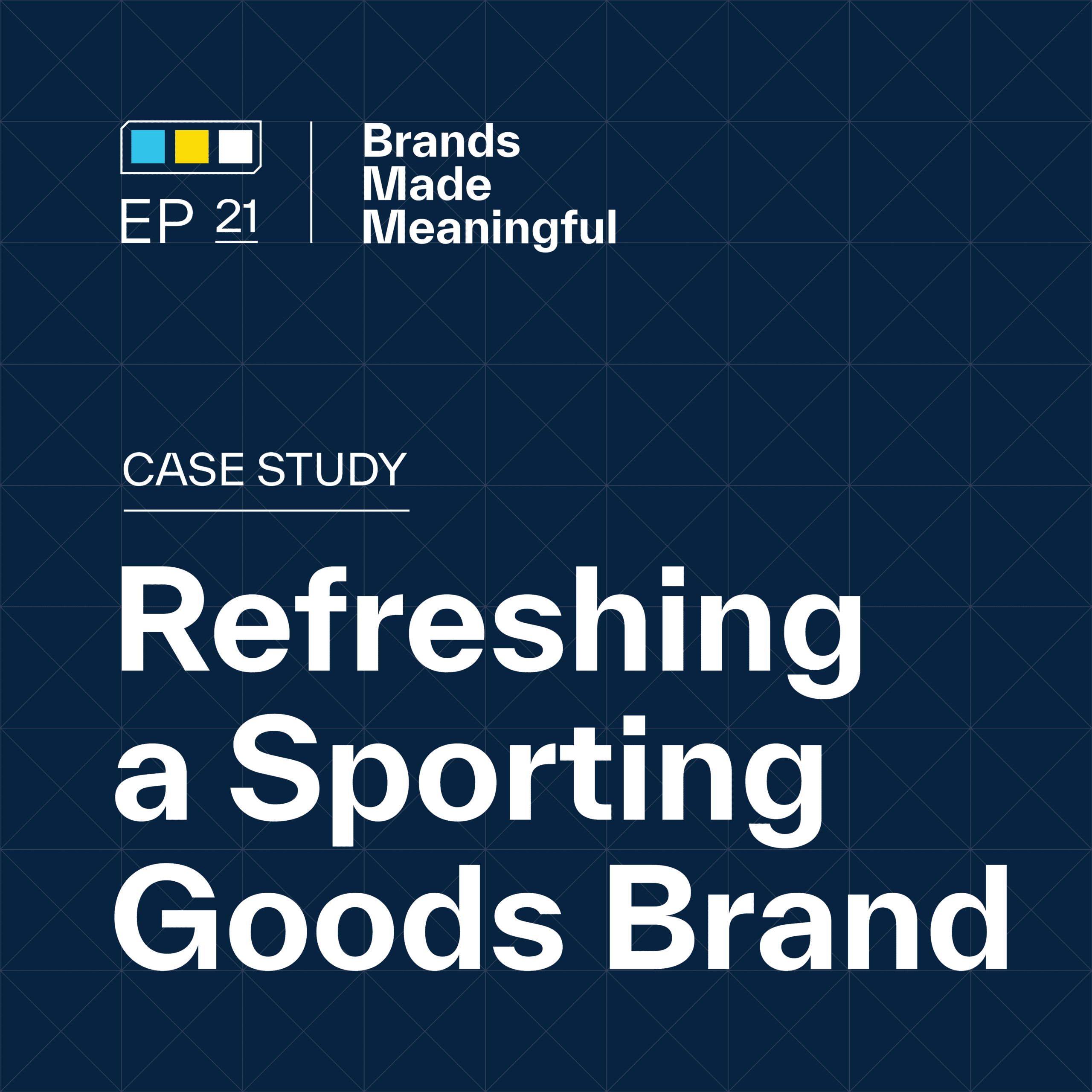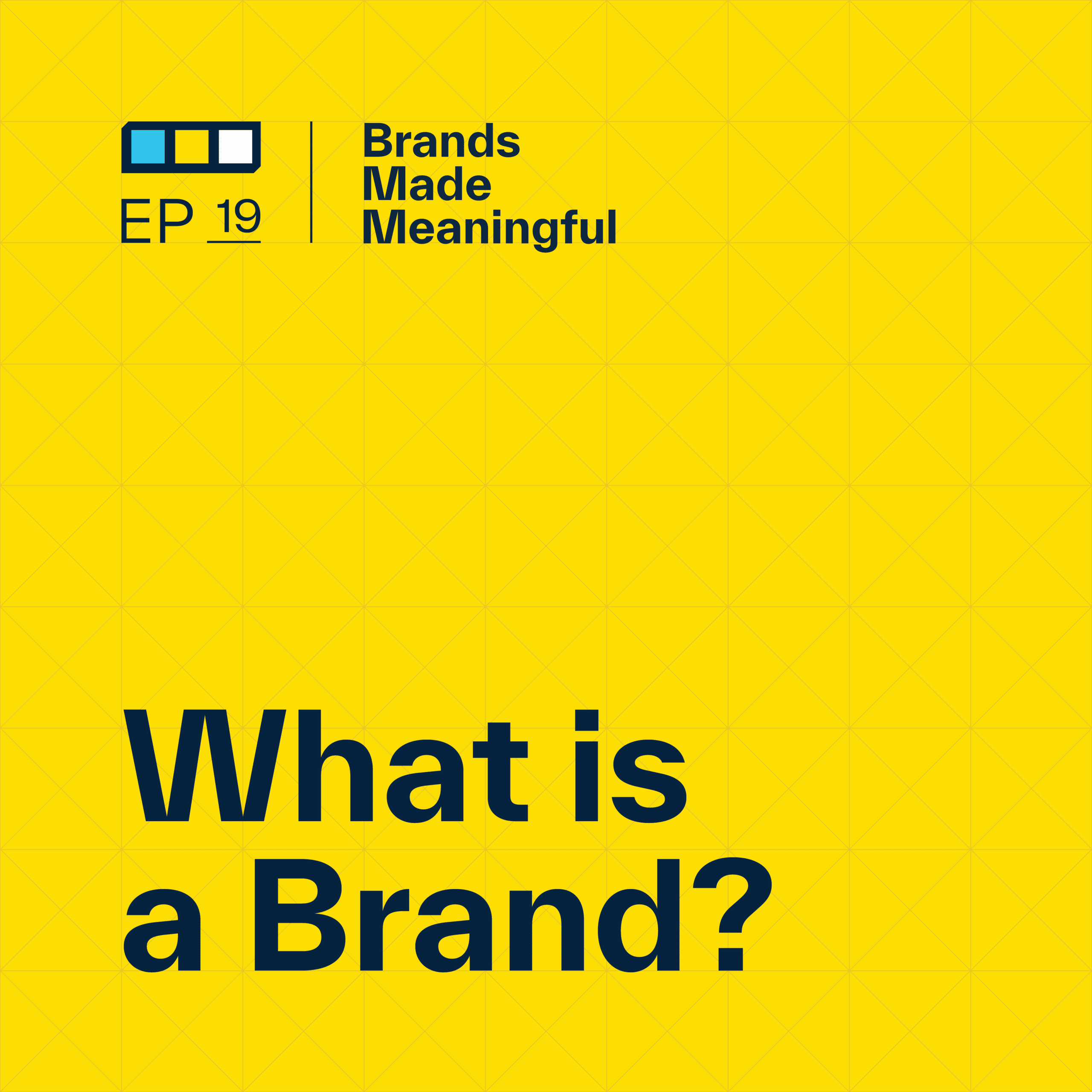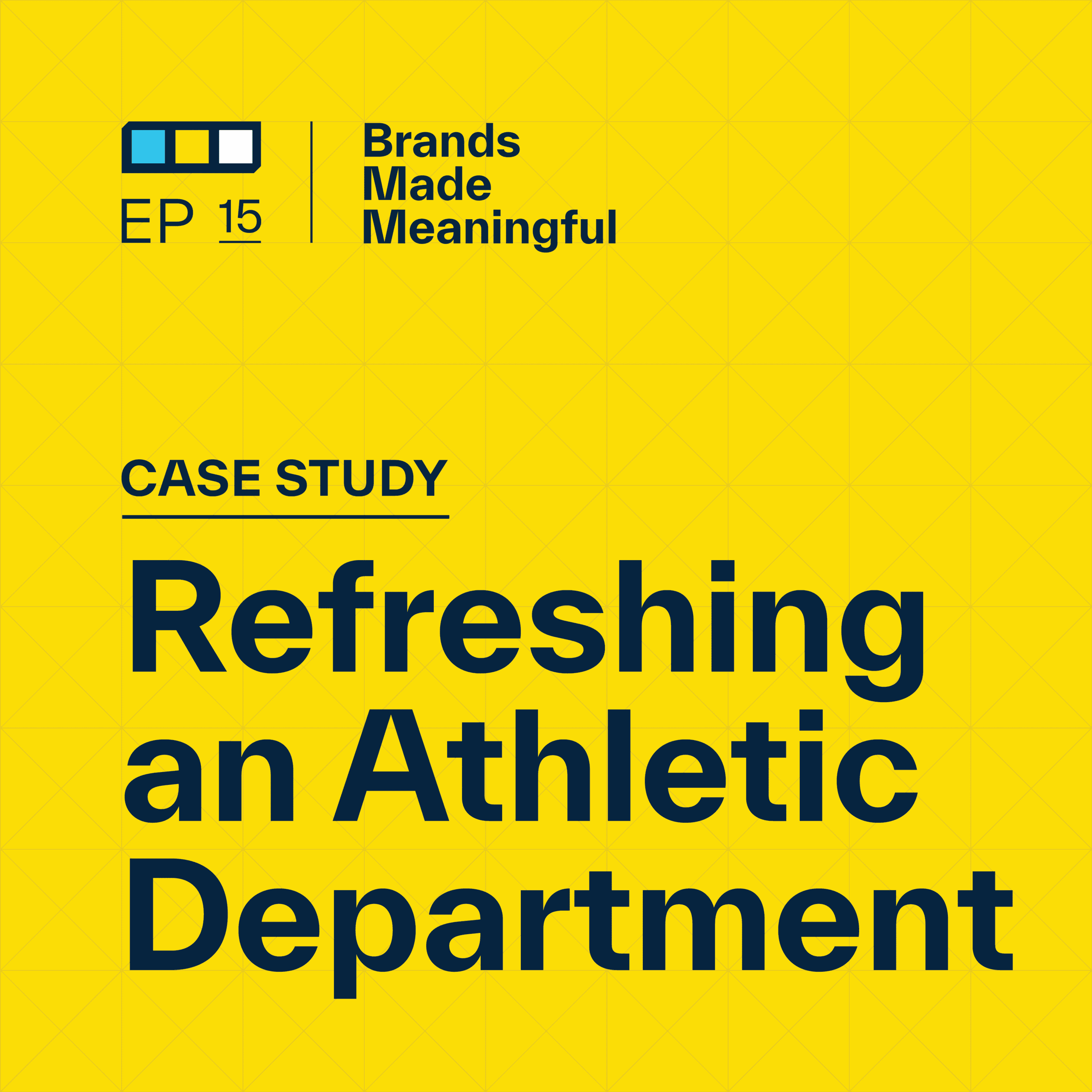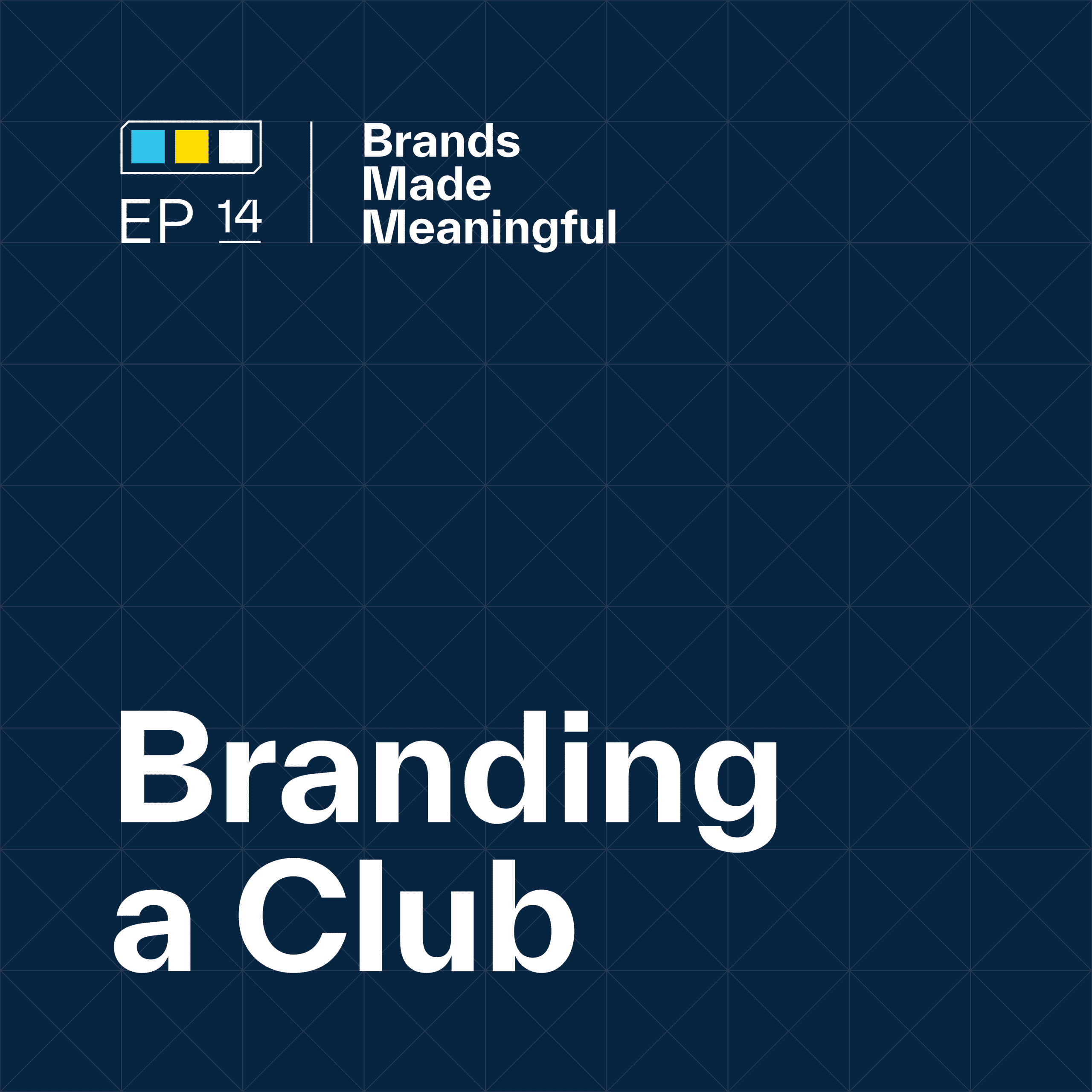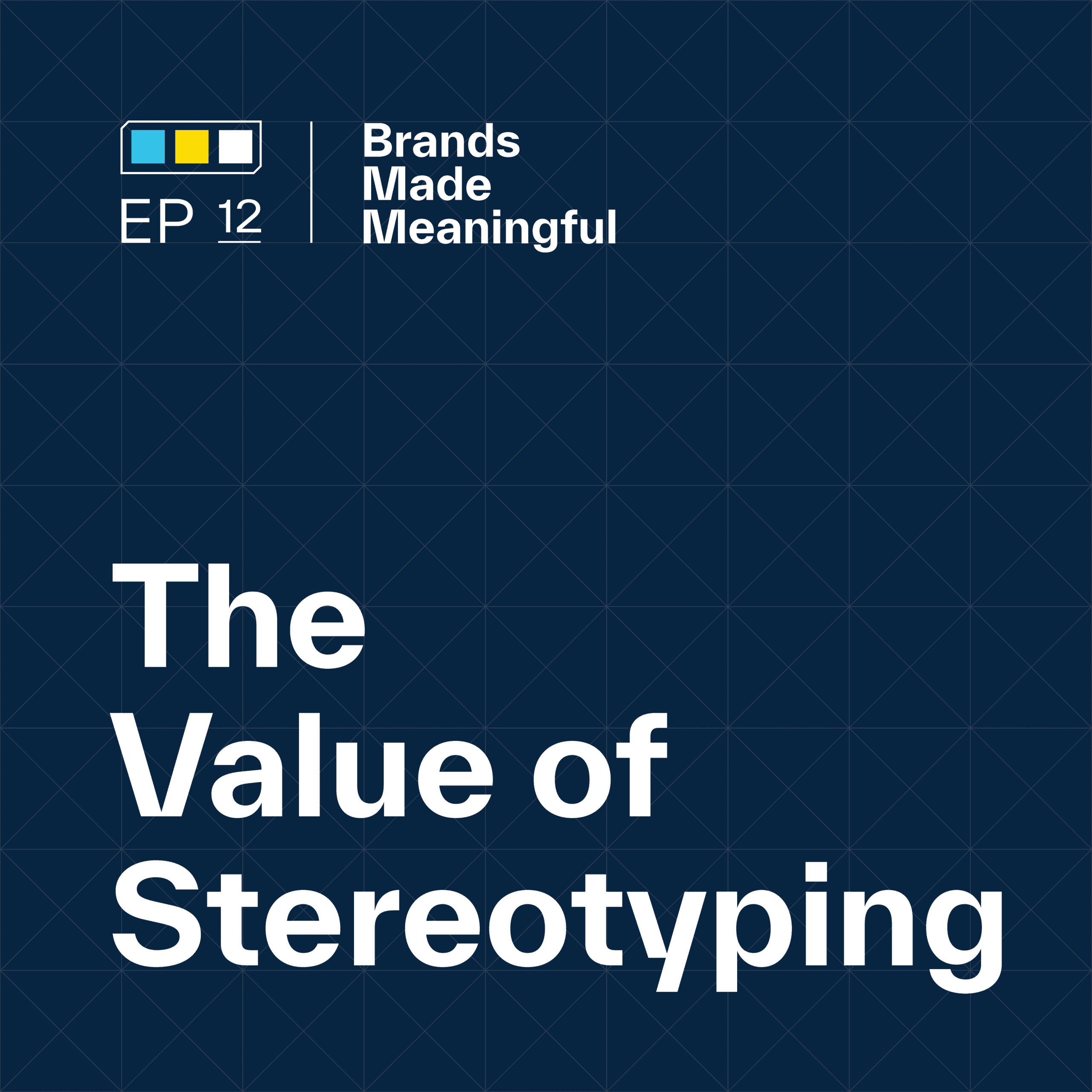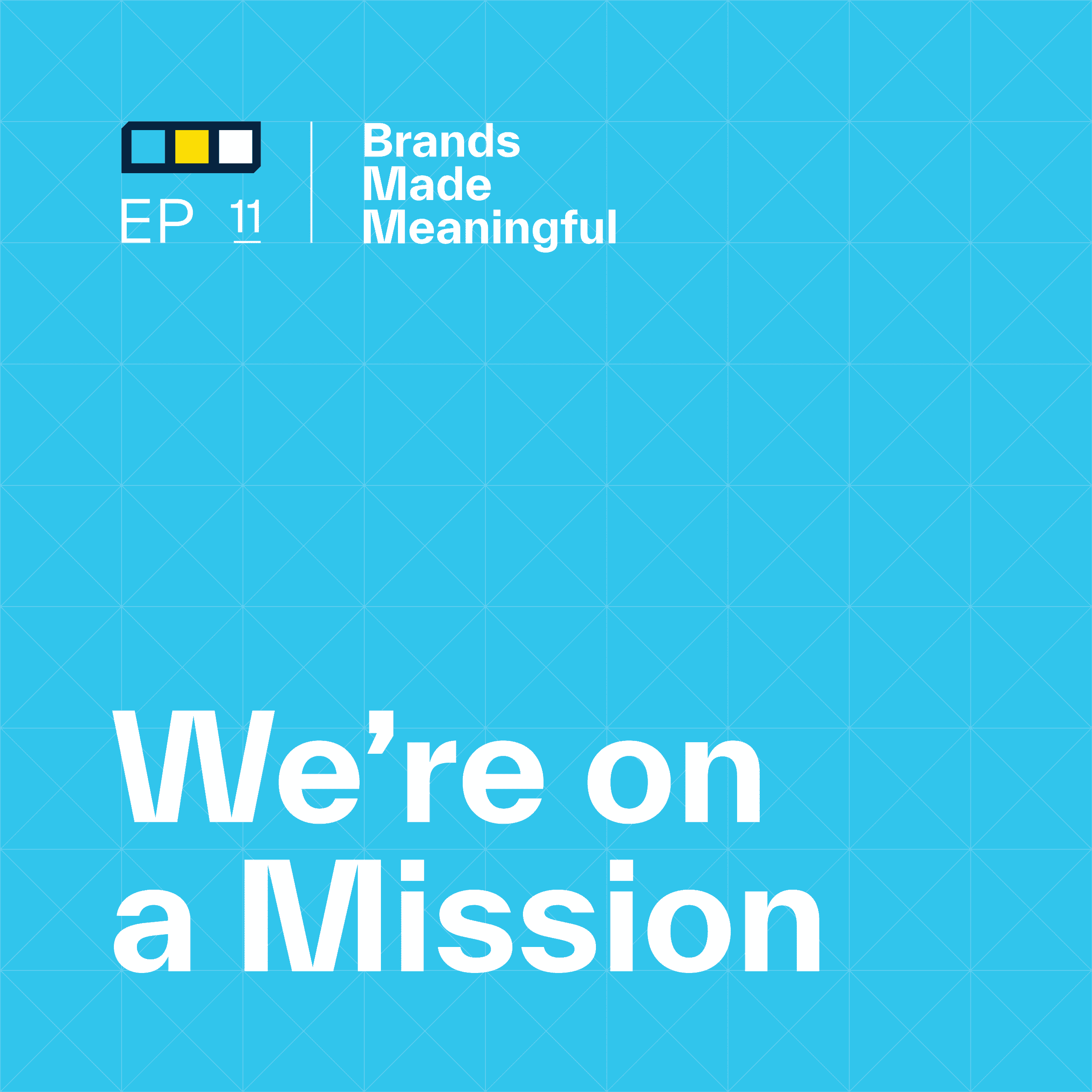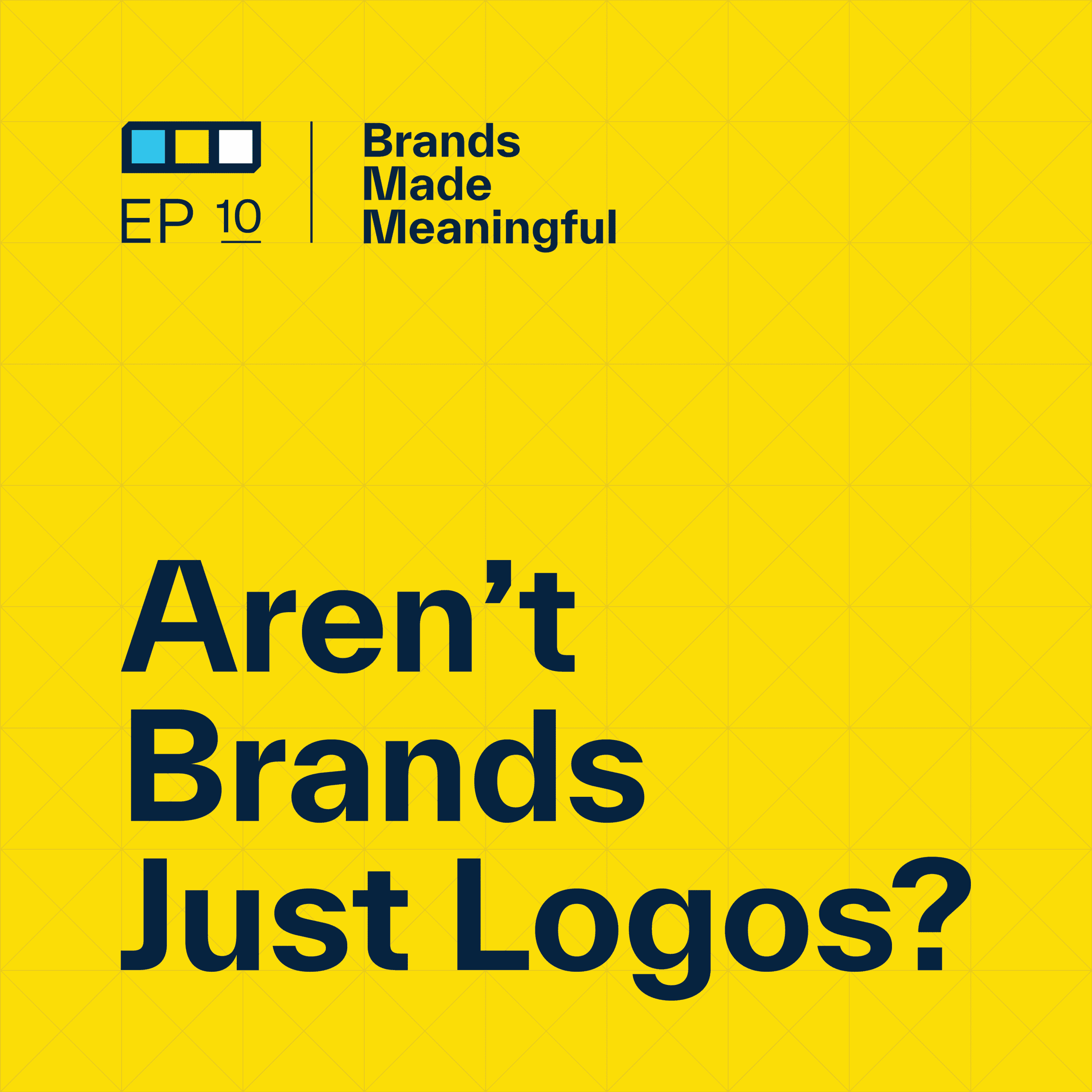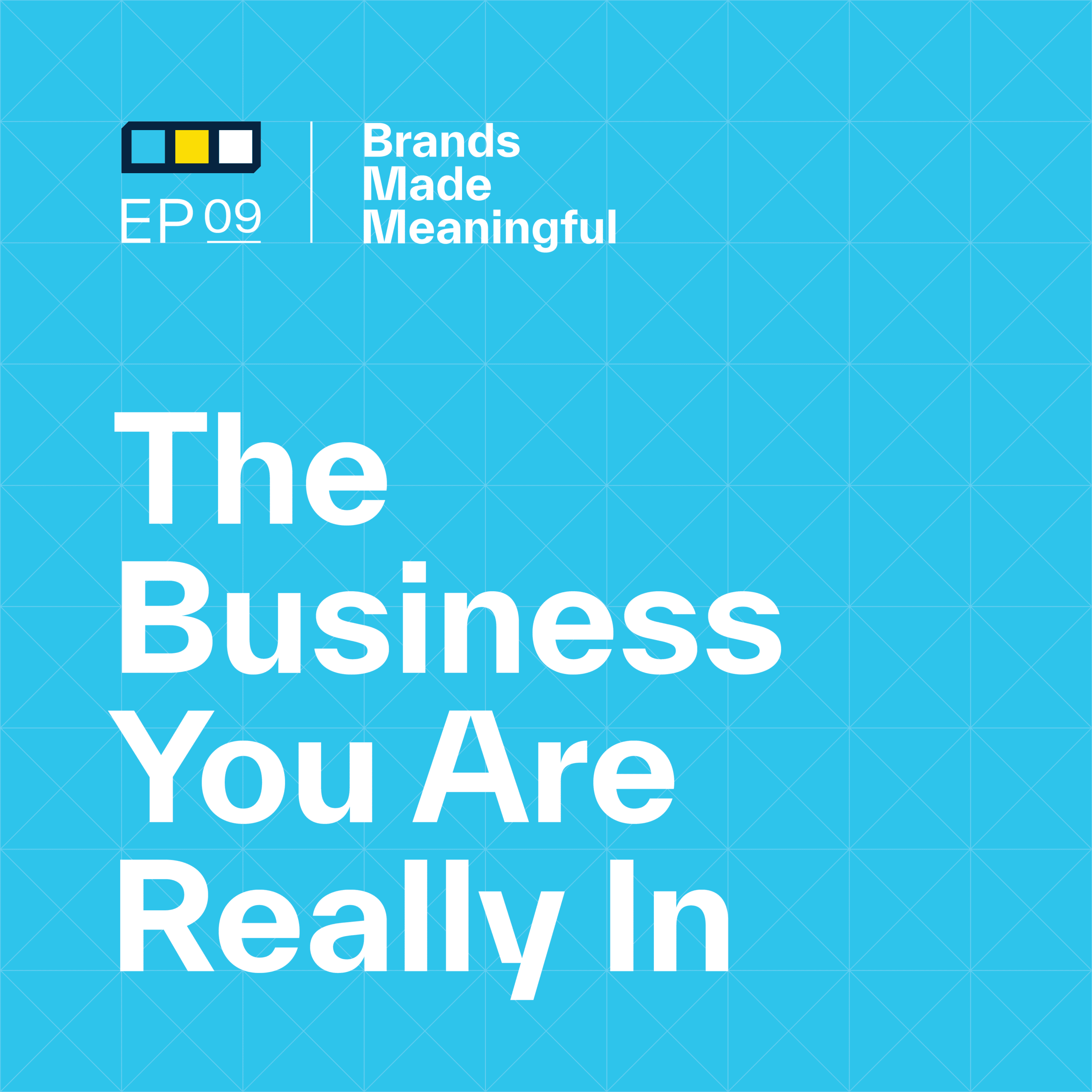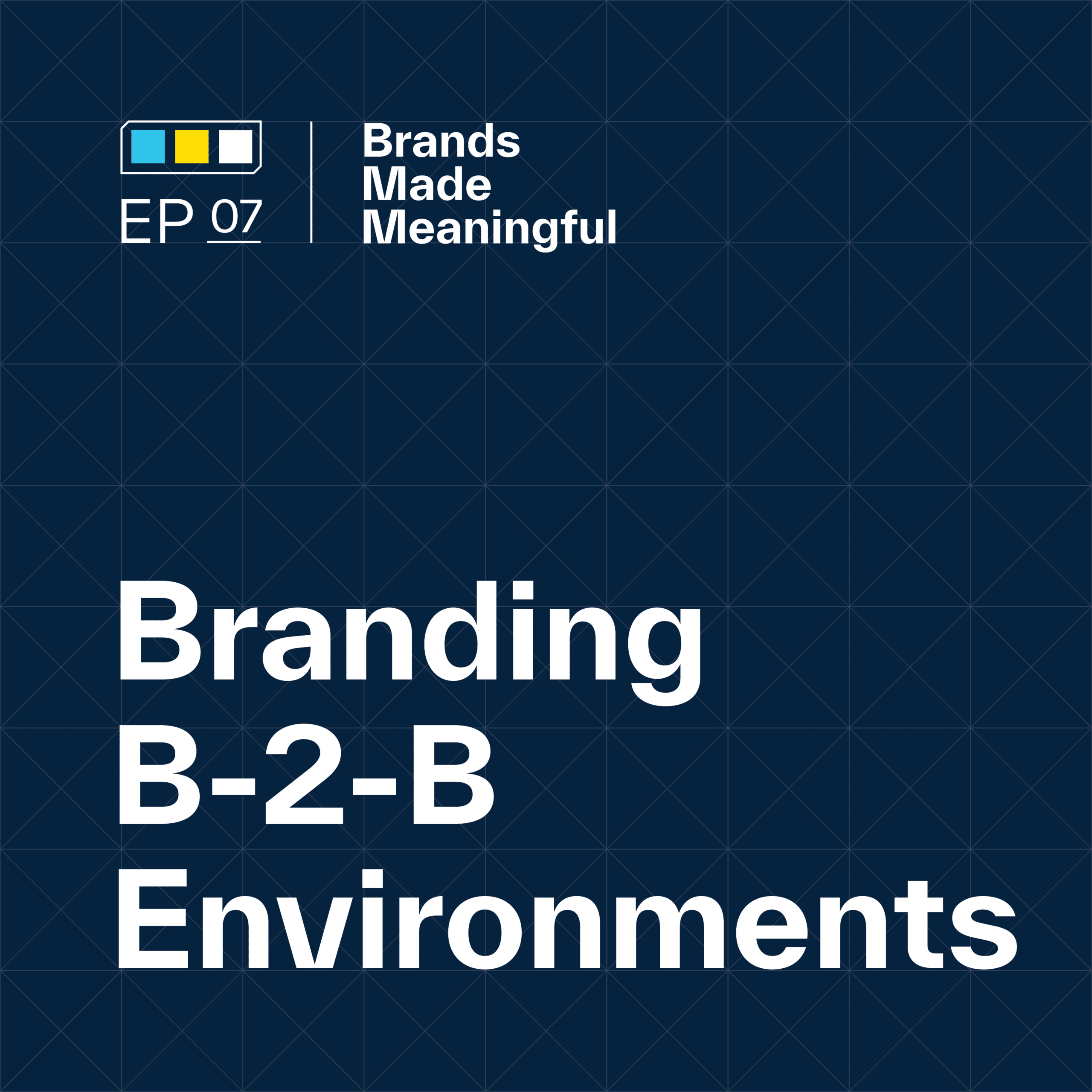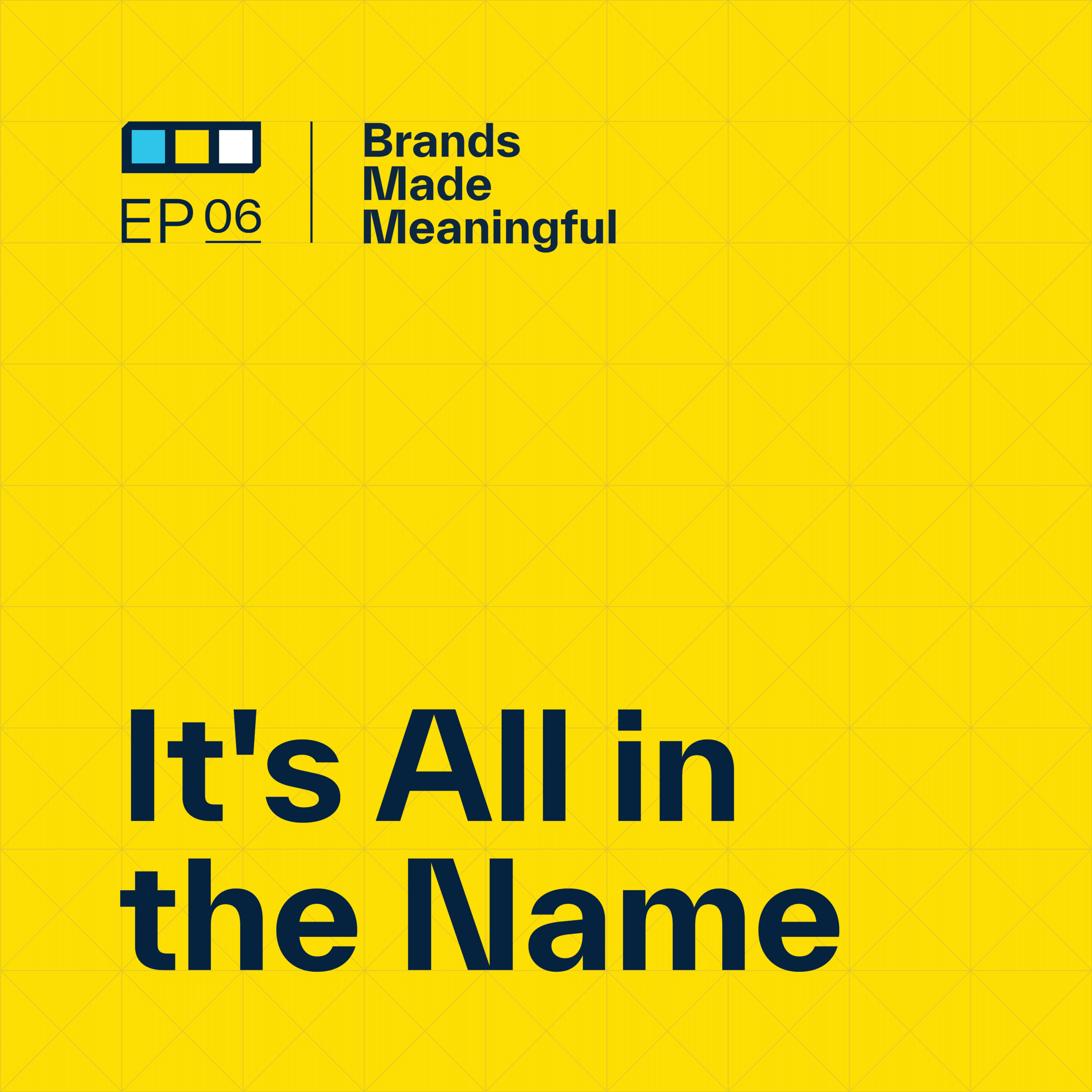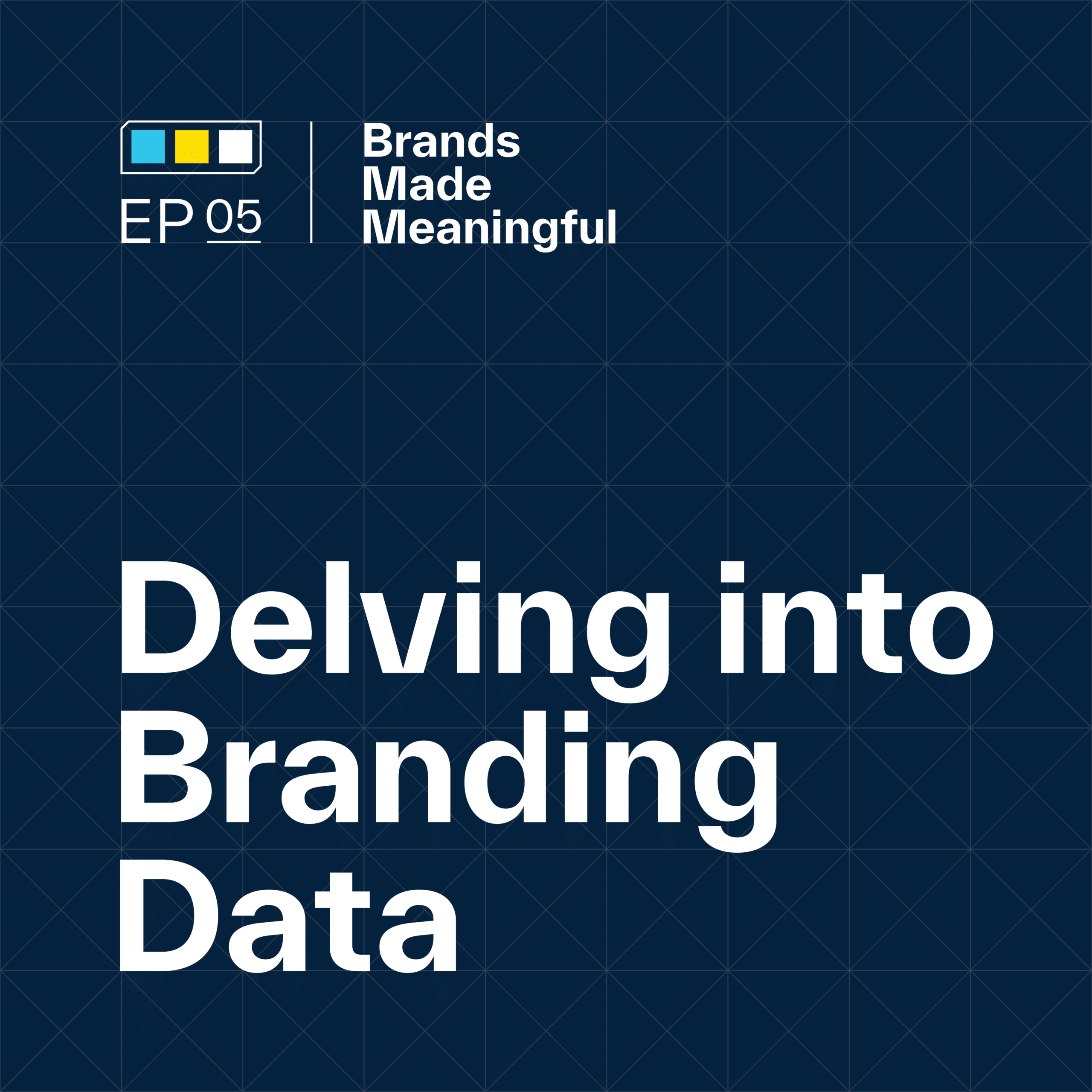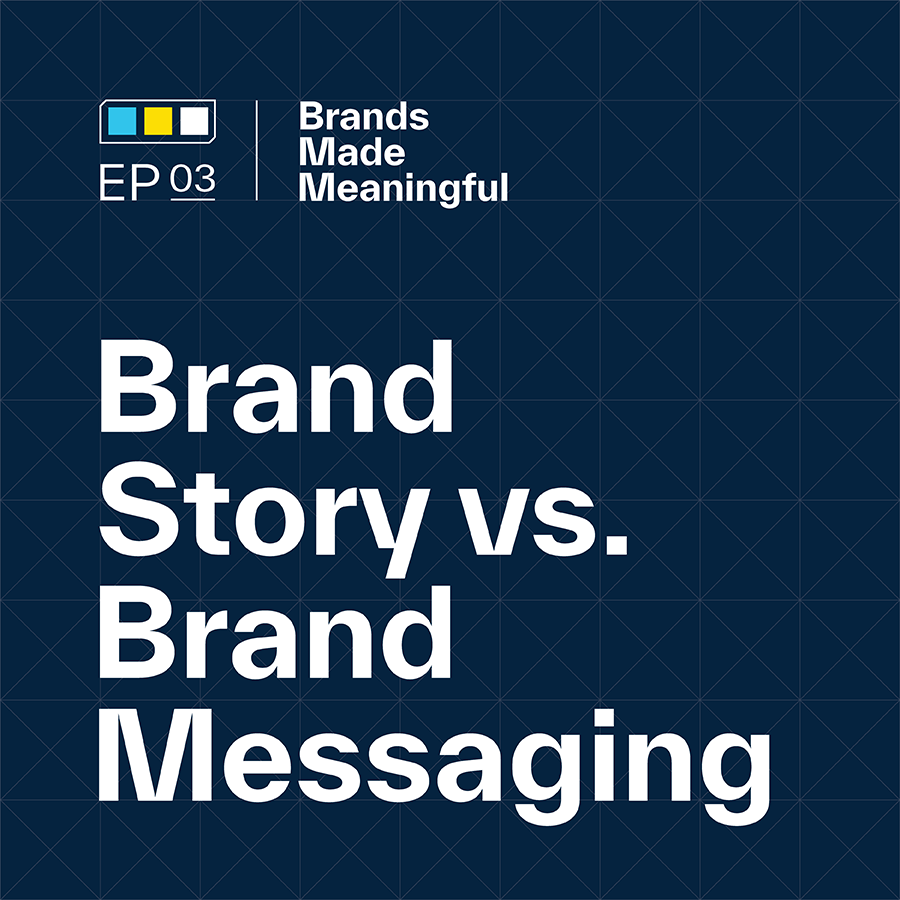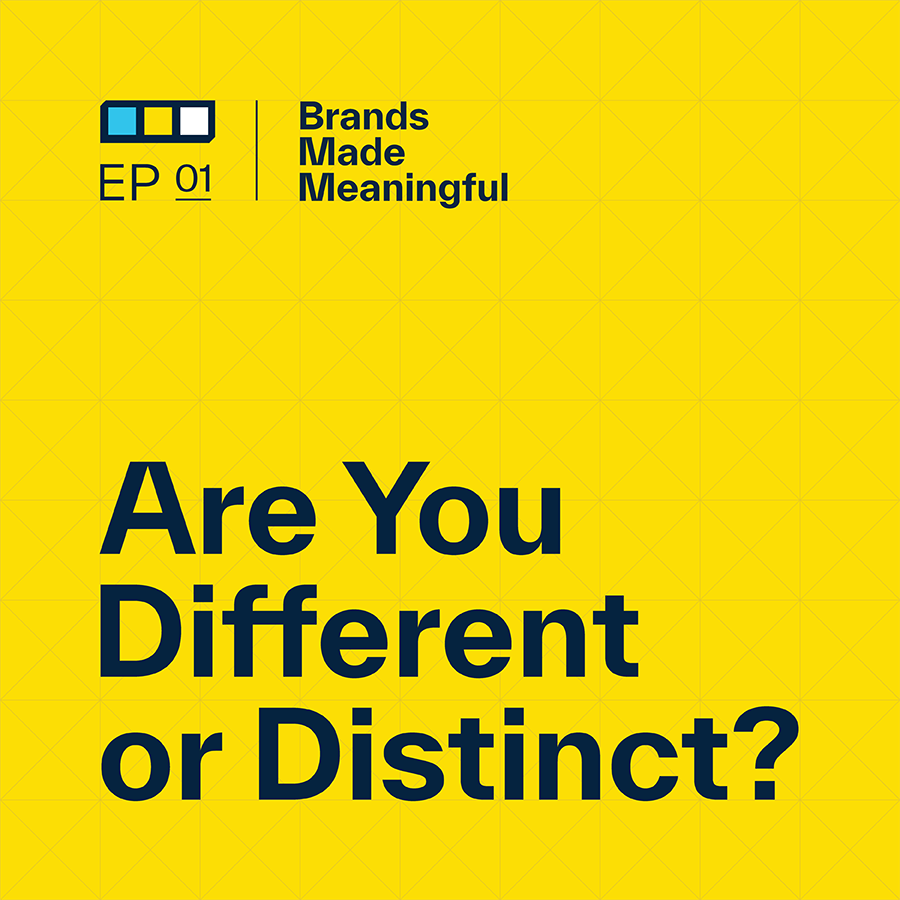EPISODE 20
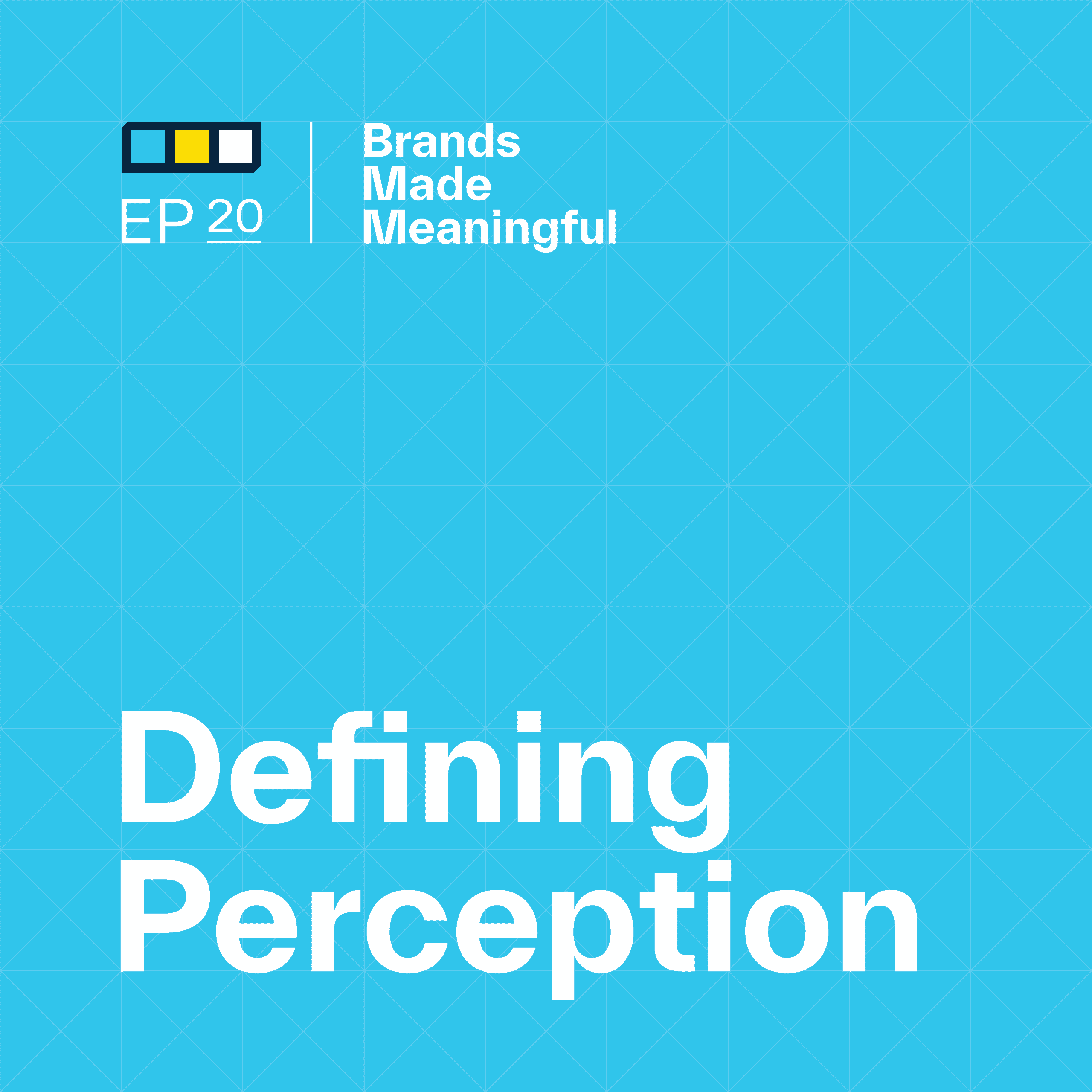
Defining Perception
Episode 20
Derek and Tucker discuss the positive and negative impacts of brand perception.
EPISODE TRANSCRIPTION
Today we’re talking about brand perception.
Derek I was having coffee with a colleague of mine the other day and he was explaining the experience of going into this very specific retail store where he thought of the store and its product line in a preconceived way. And he didn’t want to go into the store because he had a low impression. He didn’t think greatly about this specific place, but he had to go in there for a certain item that he needed and he believed they had it.
Expand Full Transcript
Derek When he walked into the store, he was blown away by how impressed he was with everything from the way that he was greeted to the lighting to the way the products were presented on the shelf. It was a 180 degrees difference between how he came to think of that store that way, whether it was in marketing or advertising or word of mouth, and then the reality of what that experience was really like and that vast difference in how terrible he thought of it, how great it actually was. That’s a problem.
Tucker So he went from, My God, I can’t believe I have to go in there and buy this thing to, I bet they have other products that I would really want. So it’s like that total difference of mindset. So what we’re talking about today is perception. And your friend had this perception initially that the store, the brand wasn’t for him, this was not his kind of place. And then walked out going, You know what? They kind of changed my mind. And we’re talking a little bit about both. So when we talk about perception, there is absolutely this front end and back end where it’s like the front end of someone who’s never experienced anything with you, word of mouth, what other people tell you. And, like you said, marketing, how people come across. And then there’s the back end of after you’ve actually experienced it, it’s like, what is the retail experience? What is that customer experience? How do you build that story once you actually have them in your store or whether you have them on your online platforms or with a salesperson, how does that all work? So we’re talking about perception today. This has come up in plenty of conversations. I think that when we’re looking back at other episodes, we always go, What should we talk about? And it’s like, Well, we’ve talked a lot about these three things, but we never really get way into one of them. So what are the three things that we always talk about?
Derek There’s three that seem to come up all the time. One is purpose over preference when it comes to building a brand, supporting your brand, growing your brand, being purposeful and intentional and meaningful in what you do and how you do it instead of relying on gut feeling, subjective likes and dislikes. We talk about that all the time. We also talk about the goal of differentiating and becoming distinct. I think we dove into those in Episode One. In our previous podcast where we define brand, Episode 19, I believe, we define brand as people’s perception of you, of your business, of all the ways that they experience you. And so we decided it’s time to dig in on perception. What is perception and what is this word we keep saying? Why is it a common theme in all of our conversations?
Tucker If you want to go back and listen to the episode before this, it will probably give a little bit of context as to why we’re talking about this, the importance of perception, if brand is this big thing and how it all works and perception is the core that says this is how we want to be perceived, it makes it easier to understand where we’re coming from. So getting into perception a little bit, and I said in the last episode that everything you do as a brand, every action you take, affects your brand. Every action you have affects that perception good, bad, or otherwise, and something that our clients always come back to us and say is, Well, so how do we know if we’re making the right decisions? How do we know if we’re making the right actions? And it all comes down to how do you want to be perceived? If your perception is defined and clearly articulated to everyone in your organization, then they should know whether they’ve done the correct actions or the incorrect actions to build upon that perception.
Derek Think of how you answer the phone, how you communicate to people electronically in email or by text or slack. Think about the way you greet people, even your physical environment, whether it’s retail space, like we mentioned, your office space, your warehouse, all of those ways that anybody, and when I say anybody, I’m also including your team, your employees, your staff, your partners, the way that all of those people come into contact and interact with you in whatever way, all those various touchpoints, all of those affect how you are perceived in their minds.
Tucker There’s this mixture of how you’re perceived and how you want to be perceived. And if you can guide that perception properly, then you’re doing right.
Derek That’s why we’re talking about this. That’s the aspect. People say, How do I build a brand if a brand’s not just my logo or if a logo is a part of it? How do I design a logo or write messaging that reinforces my brand and strengthens it? Well, one of the steps in the process is to uncover the aspects of how you want to be perceived so that will then guide you.
Tucker I think a lot of people hear the term building a brand, and that can come back to awareness and reach and all these other things that help grow that brand in different ways. But what we’re talking about today isn’t necessarily growing it, but growing it the right way, the way it wants to be grown. So what you said, like the strength of your brand, absolutely comes back to perception. If your brand is perceived the way you want it to be perceived, then it’s considered a strong, healthy brand in your mind. Then you’re doing something right as the marketing department or the leadership of this company.
Derek And if your brand is currently not being perceived in a way that’s helping your business, then that’s the red flag that says it’s time to kind of step back, understand why people think of you that way, what’s causing that and what you can do to fix that. It might not even be the brand. It could be your product or a component or it could be an individual in the organization, which also is your brand.
Tucker To your point, the most popular way that people come and work with us is, Absolutely we’re not perceived the way we want to be perceived. That’s the root cause of almost all this stuff. We need branding help because we’re not perceived the way we want to be perceived. That is the red flag. So if you take anything away from this, if you need branding help, if you are not perceived the way you want to be perceived, or if you are perceived the way you want to be perceived but you see an opportunity in the market to go, Oh, you know what? That area over there would be a great opportunity for us to change the way we can position ourselves.
Derek And you can get super scientific and data-oriented around measuring if you’re being perceived correctly. But there’s also a handful of ways to understand how people think of you.
Tucker There are qualitative and quantitative ways that we have done in the past that successfully help us kind of paint that picture. Where’s the landscape? How do people perceive us versus our competitors? How how is our product performing from a perception base versus other people? And we can get into all that on a different episode. We’ve talked about data before. This isn’t necessarily something that we’ll get into now, but if you’ve done that research and you’ve determined, Yep, you know what, we do have a poor perception or the perception is just not right for us, then either you’re leaning into it or you’re leaning away from it. And that’s what we’re talking about. So without beating this to death, let’s get into a little bit of what we do. How do we land on these terms? How do we move this forward if you’ve determined that your perception is not correct, or you would like to explore what that perception could be?
Derek We have an exercise that is part of our branding process that’s a little bit more in-depth than this. But at a high level so anybody in any organization could be thinking about and might even be able to do a certain version of this exercise for themselves around perception is to think about the 3 to 5 attributes or characteristics or adjectives that, when combined, describe the aspirational way that you want your business to be, your organization to be thought of by your customers and your employees. These words don’t usually ever describe your industry or your specific product or service line. Instead, it’s more personality-oriented type words that help you make a brand that’s distinct.
Tucker This is a great jumping-off point. This is something that we work with leadership teams on. It’s how we come in and start the conversation around this. To your point, there are a lot of other things that come into play. To get an actual deep perception, we do interviews. We do surveys, do focus groups, and figure out all that other stuff. But at the root, how do we start the conversation? Take all the visionary people in your company and start thinking about how can we push ourselves further. How can we be differentiated in this market and how can we really create the best experience for our customers or our employees? And if we start thinking about it in that sense, defining the 3 to 5 words that can really guide our actions can be a lot easier than just saying, How do you want to be perceived? Because if you ask someone, How do you want to be perceived, they’re going to give you a positive. They’re going to give you words where it’s like, really? Well, I want to be perceived well. But there’s a difference between being perceived as gritty or someone who’s refined. Those are totally different things. And you can start seeing, and we’ll bring up some examples of words that we’ve used in the past. But as we hone in on these 3 to 5, then you’re going to want to go, Okay, if we have 3 to 5 words, all of the actions that we take have to meet two-thirds of these.
Derek At a minimum.
Tucker At a minimum or we would say two-thirds. So this comes from people that we’ve worked with in the past that found success doing this. It’s to say if we got three, then we have to use two. That means that when we look at our website, it’s got to hit two of these three words. If it does that, then we’re on the right track. Then we’re doing the right action for our brand.
Derek You and I were talking before you hit the record button and we talked about how these words – I think a lot of creative businesses, agencies, design firms, and branding companies lean into these words of perception to help them. And we’ll talk about how, in some cases, at a minimum, they will inspire creative, they’ll inspire design. You just said website. So it’s a physical marketing item. But I want to share some examples. But what I want to come back to, I’m saying out loud, note to self, is the next level of inspiration that these words can get to.
Tucker So how did we start doing this? We started doing this because we needed words that represented what the creative was supposed to look and feel like. That’s where it all started. And then application of aspirational objectives. And over time, that application turned into, These can be much bigger. These can be bolder, these can be way more useful for our clients. And that’s where it really started to transition from just doing design work to helping do business-forward work. From just a purely creative perspective, taking the three words, and we’ll just say three at this point, to establish our creative across the board is a great touchpoint to say, Okay, leader, on your side, we’re going to go for these three words. Our job is to come back with creative that does that successfully, and then you are to be our checkpoint to say, Yep, I agree that that absolutely is bold and visionary and soulful or whatever your words are. And it’s like coming back with that makes it a lot easier for someone on the leadership team to agree or disagree upon what we’re moving forward with.
Derek So you just read out the three attributes that McDavid USA landed on. Some ways of just discerning how you are perceived can be in various forms of research. Well, with McDavid, it was one conversation with one of their retail partners who told them, Your brand is tired. They said, Your products are out of this world. But as I watch people come into my store and interact with your product, your packaging, and the way that the brand is, people aren’t paying attention to you. They’re going to these other products because they think of you in the wrong way. And so then they did some research and landed on the way that they were currently perceived. And it landed on functional, comfortable, and dependable. Which may be evoking of the type of emotions that would come out of or inspire creative that instead of attracting, say, 40-year-old men with sore knees, instead started to attract 18-year-old athletes who are looking for products to support their performance. That led us to then doing this exercise with them to land on soulful, visionary, and bold.
Tucker There’s a little context missing in that project that you just explained. But they saw the opportunity as younger, the younger demographic. They were owning that 40 to 60-year-old demographic, knee braces, all this. If you don’t know, McDavid is a sporting goods company. They do like football.
Derek Basketball.
Tucker Knee braces, run ads, sports medicine. And they’re all about getting into that game and trying to figure out the best way to help athletes perform. And so, initially, when we started working with them, that performance was, like you said, functional, comfortable, and dependable. It was all about being there, being trustworthy, doing that. That works for them. It helped them over 30 years build a really successful business. For them it was seeing a new opportunity in the market to say, Okay, we’re perceived as this and that’s totally fine. But there’s a demographic out there. There’s a group of people that could really help us launch this business into a different level that needs our perception to change. So then they determined, You know what, we need a new perception because this isn’t right. And that’s where we got to these new words. And when you look at it, the difference between functional, comfortable, and dependable and then soulful, visionary, and bold, you can start seeing where they can have a very different look to them creatively. But then when you apply it to the business, it changes how they do everything. It changes how they think about their products. It changes how they think about the way that people are told about them. It changes the way that their salespeople talk about it. It changes everything along the consumer side, but it also changes everything on the side of the employees to say you’re no longer a part of a functional, comfortable, and dependable brand. You’re a part of something that’s visionary, bold, and soulful. And so we’re expecting you as our employee to live that out or live two of the three of those out.
Derek And these are internal words. These aren’t words that customers or any of your marketing materials ever actually necessarily say. I think they inspire how those actions and messaging and visuals come to life to hold up to them. And when we work with a company on landing on these, each of these words has a whole narrative behind it. So there’s a sentence or two that detail, in their brand language, what soulful means to McDavid.
Tucker I think a big fault that some people who do this say, Okay, we achieved those words, how do we connect those dots? So what we would say is there’s this great North Star set. How are people touching that North Star? How are people using that North Star moving forward? And if you don’t have a definition, or I call it a rationale, for what that even means, then it’s going to make it really hard for anyone in your organization to do it. Remember, we’re expecting people on the HR side to use this. We’re expecting people in accounting to use this. It’s not just for creatives. If we make it just for creatives, then maybe we don’t need as much of a rationale and we can just let those words inspire. But this needs to have more legs than just the creative department. So that was a good example. Are there any other examples we have? McDavid was one. Are there any examples of old and new that would really present or are there any that you think are really great examples of how people have defined these and move forward?
Derek One example that comes to mind is a product that we worked with with the brand Amino Vital, a long-standing brand that has a variety of products that are essentially amino acid-based, pure forms of protein, so they come in powders, drinks, etc. And their current brand was showing up in powdered sticks that you’d mix with your water for exercise, biking, or golf. But they were only found in specialty stores like golf shops, bike shops, or exercise facilities. And they wanted to bring this product, which is a super scientifically clean, pure form of amino acid, easy to digest, quick, and healthy, and bring it to Target. And so we worked with them on how to take that perception that’s currently small, specialized, and frankly, not very approachable, and reposition that to the perception that would help attract the Target customer – Target would call them their guests – they used to call their customers guests – and the specific demographic of that Target customer. And we ended up with this exercise with them landing on pure, scientific, and dynamic.
Tucker So the dynamic is interesting. That’s a change from where they were specialized to now dynamic. They feel like they’re for other things. You can multi-use. And that kind of changed the game with the way that, for us specifically, their packaging rolled out and how that communication rolled out was more, Okay, we need to be talking broader. We need to have more of a double use on all this stuff, but then also pure and scientific. How do we leverage those things? Almost already a part of the brand, right? They were already seen as something that’s scientific and pure, but that doesn’t necessarily mean that your whole perception changes every time. There’s been plenty of times where we work with somebody and say they have three words or maybe only one of the words changes. That still changes a lot of things because if you think about two of the three have to be true, that can really help some people go, Okay, that’s how we’re different.
Derek And it’s interesting. There are some words when we have say two different clients, and in their three words, they’ll have one word in common. But the two organizations and their cultures and their brands aren’t similar in any way whatsoever, other than maybe they’re both in the sports industry in some way. I think when people do this exercise, it’s easy to get really hung up on finding the perfect word that has to mean everything to everybody forever. And that’s why that story in that narrative is important, because it’s less about the perfect word, as it is about having a unified understanding of what that word describes for your specific brand.
Tucker And I think that a lot of the people we work with, the word approachable comes to mind, want to have everything. It’s like, We want to be perceived as approachable. And it’s like, Okay, but for you, is that a given or is that something that really pushes your team to do something better? And maybe it does. There are times when you can say, Well, with our websites, we’re really not approachable right now. We need to make that happen. So just figure out the words that actually help you move the needle forward rather than just kind of solidifying what’s already been done so that you can feel good about what’s already been done. I think that’s the really big roadblock or speedbump that people have to get over.
Derek Yeah, avoiding point of entry, boilerplate words or attributes that you would expect of any business or of any brand. Trust comes to mind. Want to be trustworthy?
Tucker We want to be an honest brand. I would hope that you’re not lying to people. And so with some of those things, I wouldn’t waste your time, that your team will check it out at some point. We only have a certain amount of time to say, Here are the ways we want to be perceived. And if you’re spending their time saying honest or accountable, that might not be something that really inspires them to do better work.
Derek I should point out that what we’re talking about are not core values. Brand attributes that help craft and create your brand’s perception are a different part of what we would put underneath our guiding principles. But that’s a different thing than core values. We’ll talk about core values in another conversation, which are the attributes that describe the people.
Tucker They’re characteristics of someone’s personality or traits. But when we’re talking about these attributes, this is how people act. These are actions. These are not traits. And there’s a difference. And when we look at when we make decisions, what are we making them based on? Is that what we look at? Core values are the things that we hold true as beliefs. And how does that guide us instead of how do we act? It’s a nuance.
Derek But think about core values that inspire hiring and promoting of people as part of crafting your culture. Whereas the desired brand attributes that we’re talking about, these three words, we’re doing this specifically to help you craft the perception of how your brand is perceived by people, what that action, what that experience is like.
Tucker This part is really important. If you were to define anything, when we do a foundation for a brand or we define a North Star for a brand, we typically define seven things. And those seven things are very important all in themselves. But this perception thing is incredibly important. If you are going to only do one or two of them, this is the thing to do. Because when you step back and you go, Where does this have legs across the company? This should have a great definition for every single department. This should help every single department move themselves forward. So when we talk about defining departmental goals at the end of the year, for the next year, you should be using these to say are our goals, two of these three things, are they moving us forward? Same with the way that we interact with each other. The way our culture is, is our culture two of these three things? It’s really great to define these things as the base level of how we want our perception to be inside and outside of our organization.
Derek So if somebody is interested in this, for themselves on their team, let’s talk them through an exercise that anybody with a pile of sticky notes and some sharpies can do.
Tucker [00:26:09]We touched on it earlier in this conversation that what we would do with a leadership team just to start the juices flowing a little bit is to say, “All right, everyone, take 5 minutes and write down the adjectives of how we want people to think of us. How do you want your coworkers to think of you? How do you want your customers to think of you? And then how do you want us to innovate as we move forward?” Start writing those words down. And as you collect them on sticky notes, throw them up on the board. Let’s say we have five leadership people. That means we would have 50 sticky notes on the board, and then do a keep-kill-combine exercise. Then move them into groups under a theme that makes sense – cluster words that are really similar. Or maybe you’ll have the same word, which is common for leadership teams that think the same way. Then start looking at the themes and ask which should be bigger. Which themes should be even more aspirational, and which just kind of keep us in the same lane we already are in? [57.0s]
Derek And there’s a challenge that some teams run into when they do this – they get stuck on how they’re currently perceived. And we will continue to remind people that if there’s an adjective of how you are currently perceived that is really successful for you, then, of course, you would carry it forward. But some people, when they want to change, they get stuck on, Well, how are we today? So sometimes we’ll actually start with a separate exercise and do the same thing and say, Okay, everybody write down five adjectives to describe how our brand is thought of now. And sometimes that helps people get that out of their system so that we can then have that on one side of the wall so that now we can say, okay, that’s how we are. Now what do we want to be?
Tucker I think that’s a really good point. Because my mind just goes to what could we be? And this is how we differ in the way we think. But it’s a great way to say, How are we today? How do we want to be? And then it’s, What do our customers need? And there’s going to be marketing people in that room that can point to that, and you’re going to be expected to be the leader on that. But to say, if we are a sporting goods company, what are our athletes expecting from us as we move forward? And some people will push back and go, Well, they don’t even know what they want yet. And I could agree with that. But just think about it for a little bit. How can we satisfy them in ten years? What are they going to be expecting and is it going to be because of the products? Is that going to be because of the experience that they have with us or what is that that we can move forward? And if we keep thinking in the future, it’ll help us to keep pushing ourselves to be better and better and better and better.
Derek If you think about, and I love your point, if you think about your customers, clients in whatever form your business is, if you think about what is it that our customers want that ultimately they might come to us, what are the problems? What are the things that they’re having an issue with that our product service team can provide them? And then also think about the type of people that you would love to have join your team, be part of your organization to make your organization be better. What do those people want? What do they want in an organization that would draw them to say, I want to work with that team. I want to be part of that team because of what they’re doing. If you can be thinking about what these people want out there, then what are the characteristics that are going to reinforce that your brand is for them?
Tucker Or giving everyone a checkbox to say that’s moving us forward. Just think about it as your checkpoint to say every single time you have an action. Let’s say you have a new project on the table and you go, Hey, we want to do this new project. Okay, we’re going to hold these three words up to say. It’s got to hit two of these three. If the project doesn’t hit it, then we aren’t going to do it.
Derek This is where branding falls between what Marty Neumeier calls the brand gap. We’ve got left brain and analytics, and we’ve got right brain and intuition. These words can be perceived – pun intended – a variety of different ways. So it’s how we define them. But it’s a mix between saying, Okay, let’s set some inspirational guidelines that we believe will help us, whether that’s rooted in data or in your intuition, and let’s use those as an objective guide post in what can end up being a relatively subjective process so that we have these things to continually come back to and say, Hey, does it like you said? So that’s how we get into how does this amplify and activate?
Tucker And when I look back at the projects that we’ve done, the most successful projects, look at a brand overhaul or a brand audit as a business project, not not a design project. If we’re looking at it as a whole, we have this more holistic approach to what we’re looking at. You find way more success because it gets applied. And to your point, what does that look like? It gets applied in all these different ways. And it’s amazing what can be done. We’ve had people look at this and go, You know, what would be great with those is a trophy at the end of the year that our employees get that lead to the most visionary person at our company. That’s just one example that comes to mind where I go, Look at that – that’s an application outside of the marketing realm.
Derek We’ll look at an organization’s website and we’ll say, Next to your direct competitors’ websites, is your website soulful, visionary, and bold compared to the words that we would use to describe how we perceive your directs, your competitors, and you can start to have that brand audit once you’ve landed on these words, to go back and look at your own materials and say, Does our marketing messaging stand up when I hold it up to these words or does it fall flat? And I think you pretty quickly start to see the value in establishing these.
Tucker And to your point, it makes it really easy for people in a different position to start auditing themselves to go, Okay, I’m in customer service. I don’t need someone to come in and audit my work. I can start looking at it now and go, okay, I’m an aware person. I can look at these three words and go, Am I treating customers with two of these three, yes or no? In my own opinion. And then when it actually gets to review time, that can even be a part of your reviews. We’ve seen people use these in annual reviews or quarterly reviews to say these are the things that we’re expecting you to take actions on. Have you done that? Let’s talk about it. And that helps us move forward all together and understand the importance of this.
Derek Within your specific role within our organization as a person who supports our brand – in our last conversation, we said everybody in every position, in every role in your organization is part of that brand. Whether they interact with outside customers or not, they all play a key piece. So if you can help them understand these two or three things and what that means to them and their role and how they can be strengthening, building, nurturing, and improving that whole brand experience so that you go all the way back to the beginning of our conversation and you start to get rid of that disparity between how people think of you and what you actually are. Because if you’re not intentional about creating this perception, people will come up with their own perception on their own, just inherently, it’s the way we are. If I don’t know what something is, that just doesn’t stay a blank canvas to me. Based on whatever minimal information I have, I’m going to form some sort of a picture of it and you have an opportunity to craft and create and frame up that canvas for your brand.
Tucker So the parting words here is to start thinking about that. Start thinking about how you’re perceived today. And then just think, Is that how I want to be perceived? Is the way that my customers, is the way that my employees think of our company, our brand, the way that I want it to be? And is that what needs to be in the future? So start thinking about these things. They’re big topics, they’re big conversations. Even start talking about id in the leadership team.
Derek If you’re thinking about your five sticky notes and you’re working on coming up with those words and you’re stuck, some people are less creative than others. One of my favorite metaphors to think about are vehicles. Automobiles. If you’re totally stuck, start to think about how people have really strong brand associations with cars, trucks, motorcycles, bicycles. That’s why I’m saying vehicles. And think about, in your opinion, what vehicle best describes it – the form, the function, the style, the attitude describes the future state of your brand in a way that will help you make it successful.
Tucker And just articulate why. The more you talk about it, the easier it becomes.
Derek I think it’s a fun exercise and it’s incredibly inspirational, important. And if you haven’t done it, or if you have done it but it’s been a while, it’s worth carving out an hour with your team.
Tucker We normally would suggest talking about it every 2 to 3 years just to say, Let’s bring it back up. Even if it’s the exact same, at least we know. At least we’ve done that step. Until next time, I’m sure we’ll talk about this again at some point down the road. But, anything else?
Derek That’s it. Sussner is a branding firm specializing in helping companies make a meaningful mark, guiding marketing leaders who are working to make their brand communicate better, stand out and engage audiences to grow their business. For more on Sussner, visit Sussner.com.
More Episodes Like This
Building Brand GuidelinesEpisode 65
Derek and Tucker show us how to build infrastructure guidelines to unify your brand experience across the board.
Club Identity SystemsEpisode 64
Derek and Tucker cover what Identity Systems entail and how to discern between internal and external methodologies.
Navigating Branding With a BoardEpisode 63
Derek and Tucker bring clarity to uniting your company under one cohesive vision.
Putting a Committee TogetherEpisode 62
Derek and Tucker assemble your need-to-know facts when putting together your committee.
The Guiding Principles of Private ClubsEpisode 61
Derek and Tucker go over the top ways private clubs can find the balance between pleasing old members while attracting new ones, all while making moves towards the future.
How Color Affects PerceptionEpisode 60
Derek and Tucker cover how to best convey your business with color.
Brand EcosystemsEpisode 59
Derek and Tucker break down how to craft effortless experiences when considering your brand as a whole.
6 Types of Brand TransformationEpisode 58
Derek and Tucker dive into 6 distinct types of transformations for a wide range of brands.
Tournament Branding For ClubsEpisode 57
Derek and Tucker discuss designing and delighting your club members with tailored events.
Brand Promoters & DetractorsEpisode 56
Derek and Tucker discuss how high level promoters increase your NPS and how to turn the tides on your detractors.
The Loudest Voices in the RoomEpisode 55
Derek and Tucker talk about gathering feedback while prioritizing every voice.
Determining A Primary AudienceEpisode 54
Derek and Tucker discuss if and when you should be honing in on your audience vs. casting as wide a net as possible.
Branding For ExclusivityEpisode 53
Derek and Tucker discuss the intricate process of naming your brand.
Measuring Brand SuccessEpisode 52
Derek and Tucker discuss how we measure our success in branding and a few key KPIs that help us understand our impact.
Branding For ExclusivityEpisode 51
Derek and Tucker breakdown how brands can create the perception that they are exclusive and only for a certain type of consumer.
What Makes A Brand SurprisingEpisode 50
Derek and Tucker break down the Sussner formula that we believe leads to a surprising brand.
Breathe Life Into Brand TraditionEpisode 49
Derek and Tucker discuss the intricacies and common pitfalls of branding for Private Golf Clubs.
They Key of Visual DifferentiationEpisode 48
Derek and Tucker break down the importance of differentiating your brand on a visual level.
Branding For Private GolfEpisode 47
Derek and Tucker discuss the intricacies and common pitfalls of branding for Private Golf Clubs.
Dealing With An Identity CrisisEpisode 46
Derek and Tucker breakdown how to identify and remedy a brand's identity crisis throughout thoughtful and intentional brand management.
Branding vs MarketingEpisode 45
Derek and Tucker discuss the differences between Branding and Marketing and how to make the two compliment each other.
Build Your Brand's FoundationEpisode 44
A brand's foundation is a critical element in being successful in the long-term.
Building a Constructive Branding ProcessEpisode 43
Derek and Tucker break down the steps required to build the most constructive and meaningful branding process.
What Makes a Brand Relevant?Episode 42
Relevance is a key piece of a brand's identity for creating clarity and connection.
Your Right to WinEpisode 41
Derek and Tucker discuss the “Right to Win” and the odds of your brand's success within your target market.
An Intro to Sub BrandingEpisode 40
Derek and Tucker discuss the nuances of developing sub-branding and strategies.
Conquer Branding FearsEpisode 39
Derek and Tucker dive into how to overcome the fear of change and the nature of constant refinement of your brand.
Balancing Strategy & DesignEpisode 38
Great strategy is a necessary foundation for great design—and great design brings great strategy to life.
Branding PrioritiesEpisode 37
Branding priorities are the actions and initiatives that shape or enhance a brand's identity, perception, and market position.
Invest in Your BrandEpisode 36
Investing in your brand benefits your company as a competitor in the marketplace, builds trust with customers, increases perception of quality, and drives employee engagement.
Why is Positioning Scary?Episode 35
Narrowing the brand's position is really a strategic decision to focus the brand's offerings, messaging and target audience on a specific niche or segment within the market.
What Are Brand Consultants?Episode 34
Derek and Tucker discuss the importance of hiring expertise with a wider breadth of knowledge than just visuals.
Hire for Brand FitEpisode 33
Hiring people that fit your brand is key in order to maintain brand authenticity, positive culture, and consistent messaging.
Your Brand’s Stance MattersEpisode 32
Your stance can help define your brand from a core level and make branding, hiring, and marketing not only easier, but more meaningful.
Levels of Executing a Brand RefreshEpisode 31
If you have a brand strategy in place, how do you execute it?
The Role of Features & BenefitsEpisode 30
Derek and Tucker discuss the importance of features and benefits within the context of branding, selling, and marketing your products and services.
Should You Listen To or Lead Your Customers?Episode 29
Within the challenge of any rebrand is the challenge of managing customers' perception of change.
Managing a Brand TransformationEpisode 28
Episode 28 discusses the highlights and challenges of rolling out a new brand, both internally and externally.
Living Your BrandEpisode 27
Your brand is not this shiny trophy on the shelf. It is something that you are molding every single day.
What Makes a Brand Authentic?Episode 26
Season 2 starts off with a discussion about building authentic brand experiences, both internally and externally.
Reviewing your Competition's CreativeEpisode 25
Derek and Tucker discuss the process of reviewing your competitors' creative strategy to better position your brand within the market.
Interviewing your Audience for InsightsEpisode 24
This episode details the process and benefits of interviewing your audience as part of the branding process.
Assumption ReversalEpisode 23
Derek and Tucker discuss how we change our thoughts and get into a different mindset to refine and revise our branding.
Developing vs. Amplifying a BrandEpisode 22
Another way to say it is, development is building and crafting your brand story, and amplification is then telling it.
Refreshing a Sporting Goods BrandEpisode 21
This episode shares the steps behind Sussner’s work in refining the Shock Doctor brand.
Defining PerceptionEpisode 20
Derek and Tucker discuss the positive and negative impacts of brand perception.
What is a Brand?Episode 19
Derek and Tucker discuss what defines a brand and what makes them successful.
Branding Golf Courses vs Golf ClubsEpisode 18
Derek and Tucker further hone in on golf course design.
Refreshing a Golf CourseEpisode 17
Derek and Tucker discuss the bar for golf course design – and how to push past it.
Let’s Talk Taglines Episode 16
Derek and Tucker talk taglines in today's episode.
Refreshing an Athletic DepartmentEpisode 15
Derek and Tucker sit down today to discuss what logos mean within branding.
Branding a Club Episode 14
Derek and Tucker discuss how to brainstorm branding a club.
An Intro to Internal Branding Episode 13
Derek and Tucker discuss the power behind internal branding.
The Value of Stereotyping Episode 12
Derek and Tucker sit down today to discuss the meaning of stereotyping within the branding world.
We’re on a Mission Episode 11
This episode digs into the rallying cry for the greatness your team is going to accomplish.
Aren’t Brands Just Logos? Episode 10
Derek and Tucker sit down today to discuss what logos mean within branding.
The Business You Are Really In Episode 09
Derek and Tucker sit down today to discuss how to discover what business you are really in to better understand your mission statement.
Clarity of Vision Episode 08
Derek and Tucker discuss the importance of looking ahead towards the big picture to better hone the purpose behind what we do in the now.
Branding B-2-B Environments Episode 07
Derek and Tucker discuss the Branding of Spaces.
It’s All in the Name Episode 06
Derek and Tucker discuss what a name can say - and not - about your company.
Delving Into Branding Data Episode 05
Derek and Tucker jump into the discovery phase of branding before it hits the drawing board.
Content Made Meaningful Episode 04
Today Derek and Tucker discuss the concepts within content and its common misconceptions such as the phrase "Content is King."
Brand Story vs. Brand Messaging Episode 03
Your story matters.
Visuals That Take The Cake Episode 02
Derek and Tucker sit down to discuss visual impact and what that could mean for your brand.
Are You Different or Distinct? Episode 01
It's not about being the only option, it's about being the right option. Join Derek and Tucker as they discuss Differentiation & Distinction.


